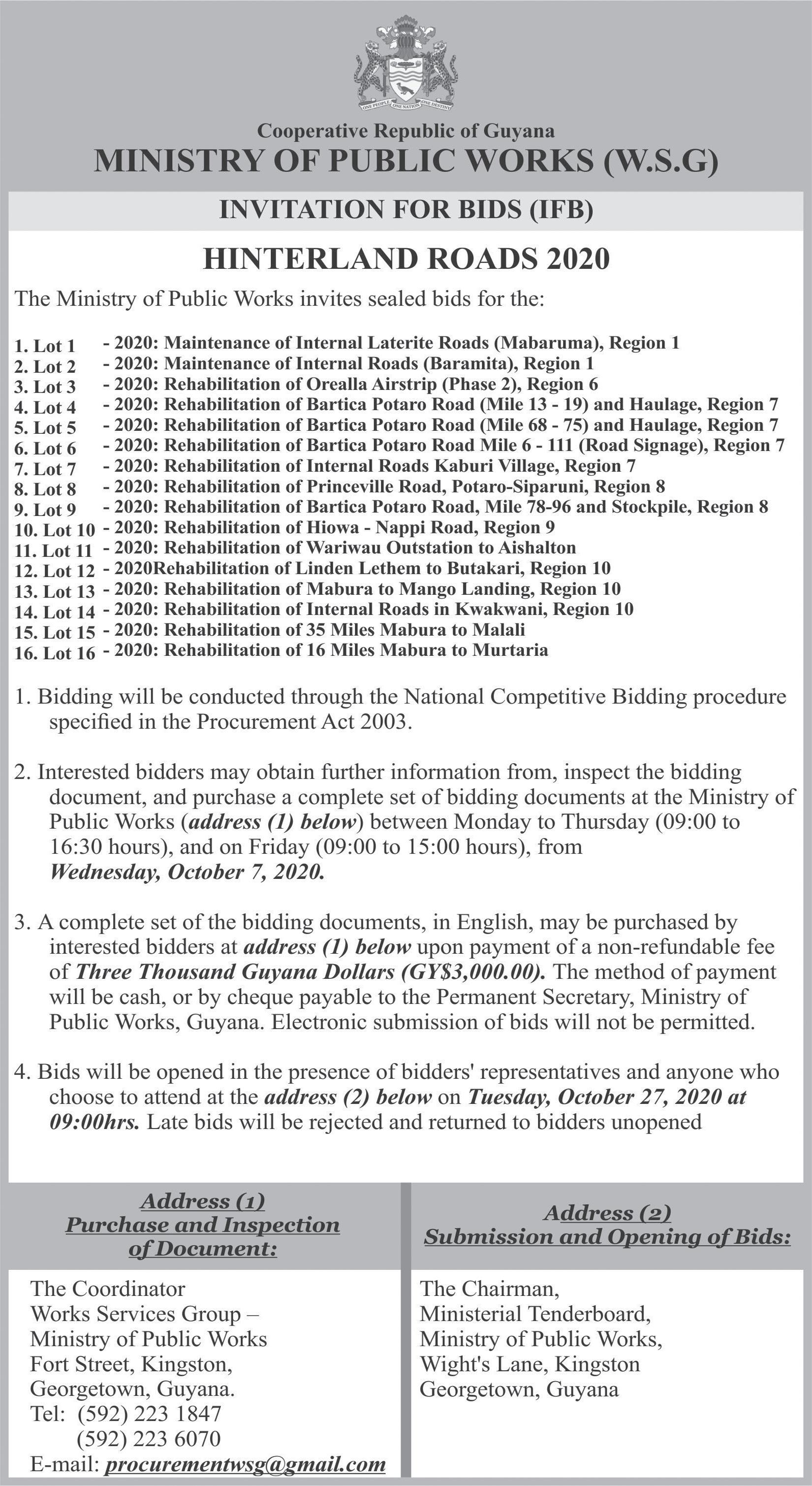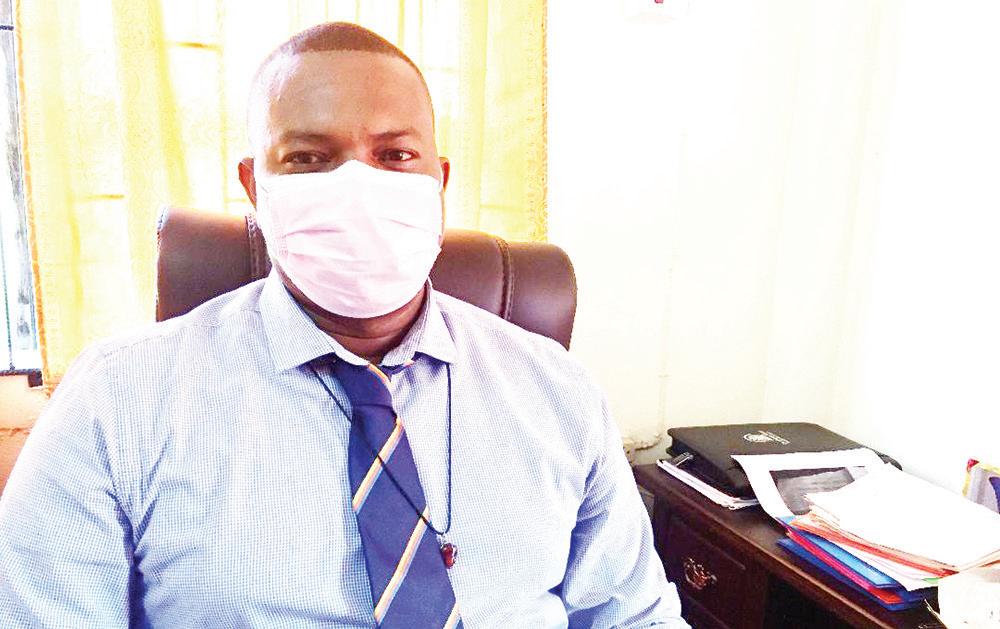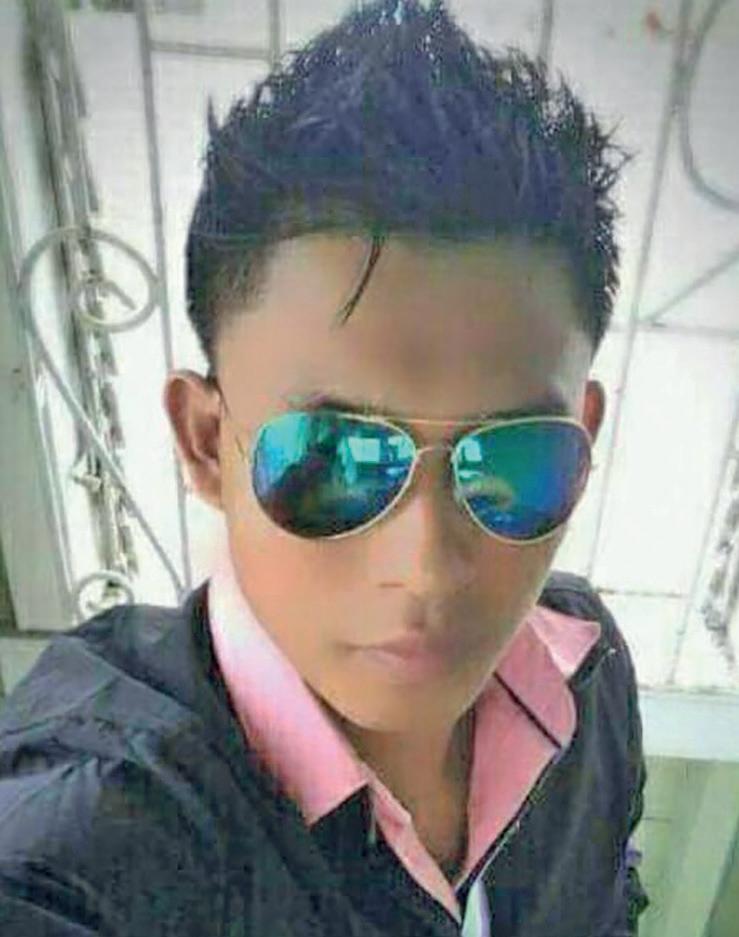
48 minute read
Charred remains in
12 NEWS SUNDAY, OCTOBER 18, 2020 | GUYANATIMESGY.COM Omai has potential to overtake Guyana’s top gold producers – VP
By Jarryl Bryan
For some time, Aurora Gold Mine and Troy Resources have been the top gold producers in Guyana. However, with an old giant, Omai Gold Mines, slated to restart production sometime in the future, the company is confident that it can overtake its competitors’ gold production figures.
In an exclusive interview with Guyana Times, Omai’s Vice President of Exploration, Dr Dennis LaPoint, was asked about Omai’s potential gold deposits, which reports have put in the region of 15 million ounces.
While he shied away from an exact number, LaPoint confirmed that they are likely to surpass the figures being churned out by Aurora (recently taken over by new management) and Troy Resources (which restarted operations in January after a two-month closure).
“Yes, I think we should do much better. I think Omai is a unique situation geologically. We have a lot of information from the previous work, that shows that we have good potential. And I think we will find new deposits besides. So my objective is to make a major producer in Guyana,” LaPoint said.
When asked what is the upside potential for gold production at Omai Gold Mines, LaPoint compared it to the Merian Mine for Alcoa Corporation and the Rosebel mine, both of which are locat-
Omai’s VP of Exploration, Dr Dennis LaPoint (2nd right) in conversation with some of his staff over drill core samples
ed in Suriname. Cambior did was very focused
“I think the upside po- on developing the two pits.” tential would be somewhere “But they didn’t have the close to the operations at the resources to expand those reMerian mine and the Rosebel sources outside of what you mine. So, we have aspira- see they mined. So, we have tions, but we have to do the to come in and expand those test work so we can confirm,” resources. So, the concept peothe geologist explained. ple have that they’re mined
LaPoint explained that out, is not true. It’s not mined under its former manage- out. It’s just that at the time, ment, Cambior, Omai pro- with the gold price, they could duced 3.7 million ounces of not afford to expand the opgold. But according to him, erations. Nowadays with the this has hardly scratched the gold price, we can do that,” surface and Omai is far from LaPoint said. mined out. In fact, he noted Out of the 634,905 ouncthat Cambior would have con- es of gold declared in 2019, tinued its work on the Fennell Guyana’s two largest gold proand Wenot pits, were it not for ducers accounted for a large their financial difficulties. portion of it. Troy Resources,
“I’ll give you the example which is Australian-owned from the Roosevelt mine in and has its operations in Suriname, where I worked. Region Seven, reported proWhen they put that in pro- duction figures of 58,118 ouncduction, they had a resource es of gold from its Karouni, of about 2 million ounces. Region Seven mine for 2019. And with this drilling, they In 2018, their gold production increased it to about 10 mil- figure was 70,207. lion ounces. Hopefully, we The company produced can do the same here. But we 4528 ounces of gold in the have to have the drill results first quarter of 2020. This was to support that. The drilling a steep drop compared to the

13,333 ounces of gold it produced for the equivalent period in 2019. However, the company had closed its operations in October of last year, after a deadly mining pit cave-in.
Meanwhile, Aurora Gold Mine produced 124,200 ounces of gold last year. This was a reduction from the 150,400 ounces of gold it produced in 2018. Like its Australian competitors, Aurora also had its challenges in 2019. This included striking workers demanding union representation and their promised severance.
Aurora has since changed hands, with former Canadian management Guyana Goldfields packing up shop and selling out to Chineseowned Zijin Mining Group. In fact, Silvercorp, the Canadabased company with a stake
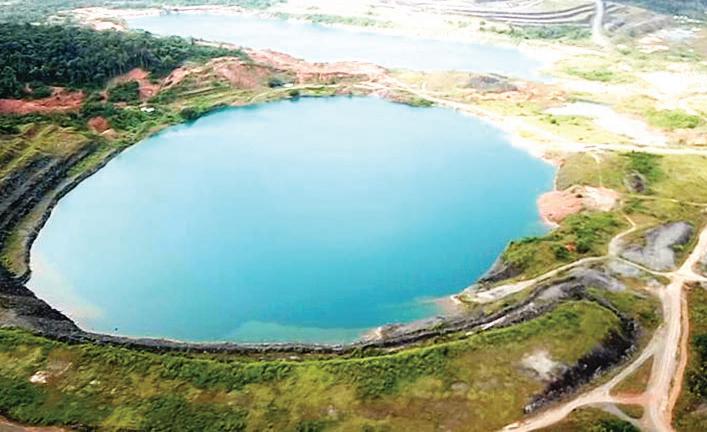
Overhead view of Omai Gold Mines
in Avalon Investments, per cent indirect interest in once looked set to snap up Omai. Aurora Gold Mine, until Zijin The investment also alswooped in to offer Goldfields lowed Anconia Resources a better price. Corp and Silvercorp to en-
Silvercorp was recent- ter into an investor rights ly issued 30,000,000 common agreement which will give shares of Avalon Investments Silvercorp the right to particHolding, a private Barbadian ipate in the company’s equity corporation which has a 100 financings.
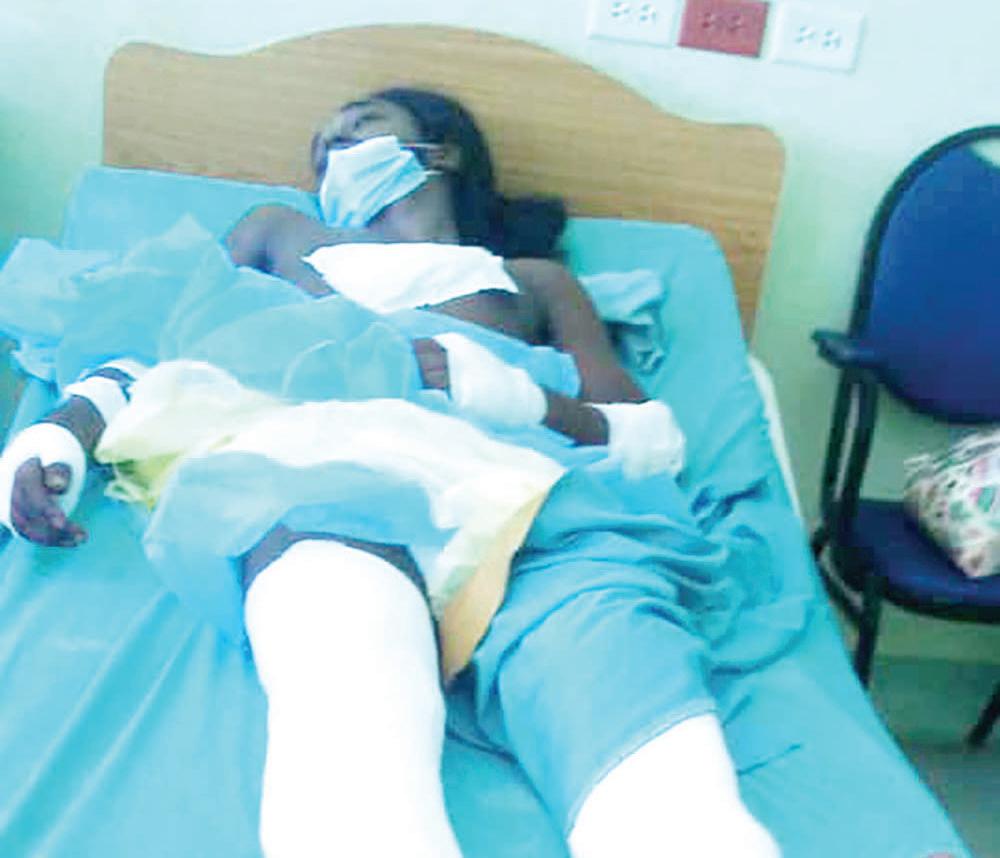
Charred remains in Berbice
Murder accused chopped by inmates in Lusignan Prison
One day after it was reported that the charred remains that were discovered at Moleson Creek, about 55 miles from New Amsterdam in Region Six (East BerbiceCorentyne) on August 20, 2020, is 23-yearold Canadian citizen Nicholas Ramkissoon Jaipaul, 23-year-old Aszim Shivgobin called “Blackie”, who is one accused in the murder, was brutally beaten by inmates in Lusignan Prison’s Holding Bay.
Guyana Times was told that Shivgobin is now hospitalised after he was chopped and beaten by the inmates on Saturday. Currently, authorities are conducting an investigation. Shivgobin and two others are on remand for the disappearance and murder of Canada Aszim Shivgobin is hospitalised with several injuries (Travis Chase photo) citizen, Nicholas Ramkissoon Jaipaul. The elderly man revealed that he received
Jaipaul had arrived in Guyana in March a telephone call that morning and the caller and was slated to return Canada in May but claimed that he had kidnapped his grandson was unable to do so due to the closure of air- and was demanding a ransom of $50 million. ports amid the COVID-19 pandemic. Thus, Reports indicate that the young man was he remained with his 86-year-old grandfa- murdered as revenge against his grandfather ther, Ramkissoon Jaipaul. in relation to a court matter over rice lands.
The pensioner had reported that the last The alleged mastermind reportedly contime he saw his grandson was just before he tracted the son of one of the maids who retired to bed on the evening of August 16. worked with the pensioner to execute the This was during the countrywide power out- murder of his grandson. age. The alleged mastermind, Monasar
The elderly man explained that he got out Beharry, called “Brickhead,” along with his of bed and lit two lamps – one of which he alleged accomplices, Aszim Shivgobin called gave to his grandson, and he returned to bed. “Blackie” and Charran Shedhan called However, the following morning he realised “Vickey,” were charged for Jaipaul’s murder that his grandson was missing. on August 28, 2020

EPA’S ROLE IN THE AGRICULTURAL SECTOR

13 SUNDAY, OCTOBER 18, 202O | GUYANATIMESGY.COM
Agriculture is the science or practice of farming, which include cultivation of the soil for the growing of crops, and the rearing of animals to provide food, wool, and other products. As Guyana celebrates Agriculture Month, let’s explore the role of the Environmental Protection Agency (EPA) as it relates to the agriculture sector. This year, the theme for Agriculture Month is “Sustainable Agriculture for ensuring Food Safety and a Green Economy”.
At the EPA, the Forestry and Agriculture Programme Area is responsible for ensuring the development of standards that seek to restore and reclaim degraded agriculture and forestry lands; prevent release of contaminants to these lands; and conserve and manage the associated resources. By conserving and managing agricultural and forestry resources, the Programme Area coordinates and implements activities in keeping with the Environmental Protection Act, Cap 20:05. Some of these activities are: authorisation of developmental projects in the forestry and agriculture sectors; ensuring monitoring and compliance; and responding to complaints related to agricultural and forestry operations. EPA is committed to a strong partnership with the agricultural community to assist in fulfilling its mission of protecting human health and the environment.
Activities that require environmental authorisation include: • Poultry processing; • Food processing plants (including meat, fish/ seafood, and fruits); • Milk-based industries; • Sugar manufacture and refining; • Rice-processing plants; • Livestock husbandry and production (> 500 heads of poultry, > 500 heads of swine); and • Mariculture/aquaculture facilities.
Waste and the agricultural sector
Agricultural wastes are generally defined as the residues from the growing and processing of raw agricultural products such as fruits, vegetables, meat, poultry, dairy products, and crops. Agricultural wastes include crop residues, weeds, leaves, litter, sawdust, forest waste, and livestock waste. Land, air, water and noise pollution are inevitable within the agriculture sector; as such, the EPA is here to ensure that guidelines are in place so that these wastes do not produce pathogens and transmit diseases between animals, humans, and the environment. The guidelines, which include those for swine and poultry rearing, can be accessed on the EPA website http://www.epaguyana.org/epa/.
ONE MIGHT ASK: WHAT ARE THE REQUIREMENTS TO OBTAIN AN ENVIRONMENT PERMIT? ● An application form for Environmental Authorisation ● Identification of the permit applicant (National ID Card, passport). ● Proof of land ownership (transport, lease or other agreement with the land owner or occupier, or acknowledgement of application for Lease of State Lands from the Guyana Lands & Surveys Commission). ● Map showing surrounding land uses, identification of receiving water(s), and the location of any existing or proposed intake and discharge structures, and the location of any discharge. ● Site Plan showing the layout of the operation. ● Project description (summary). ● Business registration/certificate of incorporation (if applicable). ● Any other information which the Agency may require under the Environmental Protection Act, 1996, or the Environmental Protection (Authorisation) Regulations, 2000.
REMEMBER: THE ENVIRONMENT IS EVERYBODY’S BUSINESS. HELP US TO HELP YOU.

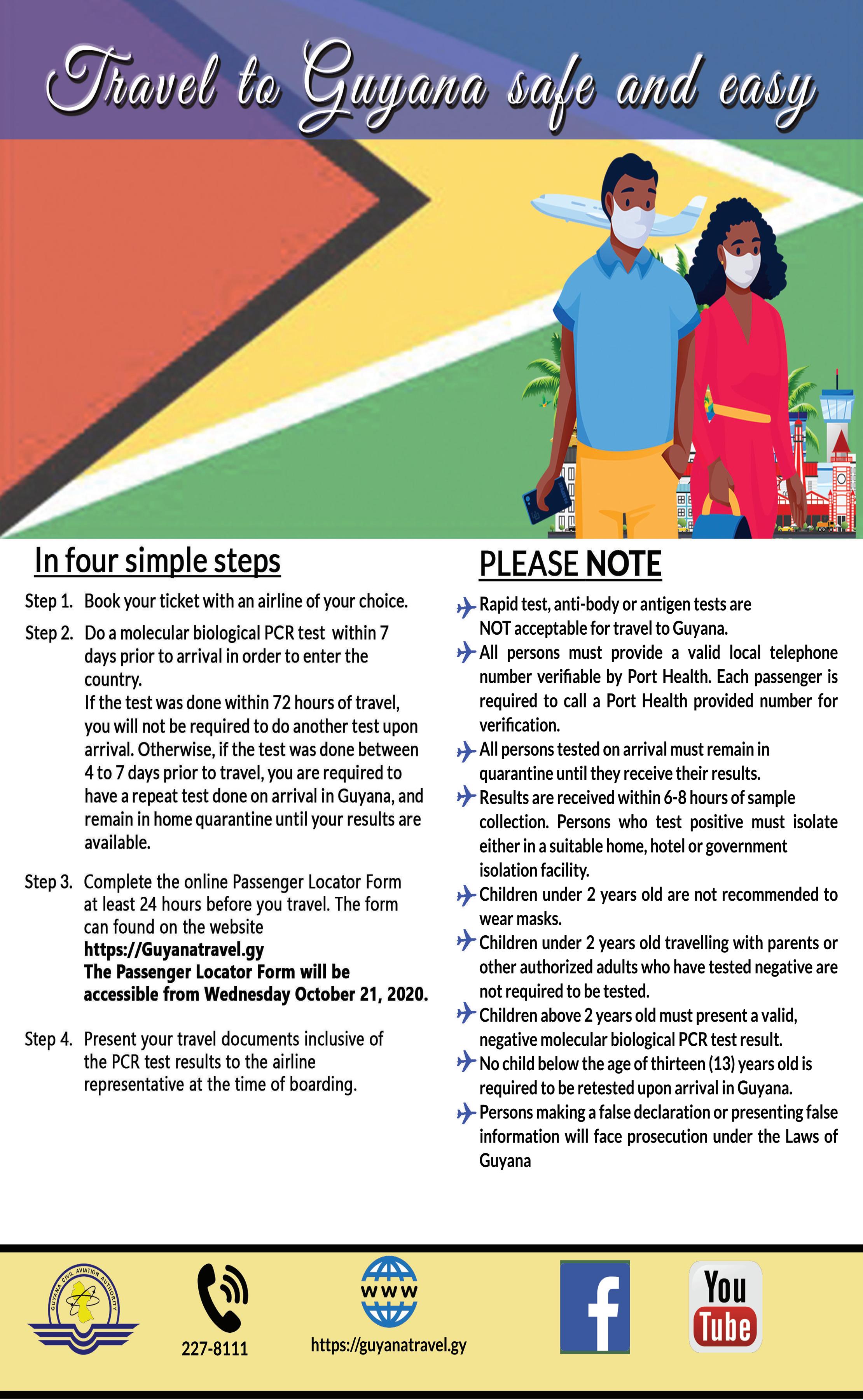
Reference
https://www.sciencedirect.com/topics/earth-andplanetary-sciences/agricultural-waste https://fas.org/sgp/crs/misc/R41622.pdf https://www.epa.gov/regulatory-information-sector/ agriculture-sectors-crop-naics-111-and-animal-naics-112
You can share your ideas and questions by sending letters to: “Our Earth, Our Environment”, C/O Communications Department, Environmental Protection Agency, Ganges Street, Sophia, GEORGETOWN, or email us at: eit.epaguyana@gmail.com, follow us on Facebook and Instagram, and subscribe to our YouTube channel.
14 FEATURE SUNDAY, OCTOBER 18, 2020 | GUYANATIMESGY.COM From Georgetown to Florida:
Dr Moti Ramgopal shares the journey of becoming a leading Infectious Diseases Specialist
By Lakhram Bhagirat
The world of infectious diseases is vast and though it may seem as though much of it is explored, that may be far from the fact. The volatility of the world’s healthcare system was exposed late last year and early this year when COVID-19 began spreading like wildfire.
Currently, there are no signs that the spread of the potentially deadly disease is nearing containment.
COVID-19 does not discriminate and over the last few weeks, the world learned that one of the most powerful leaders – Donald Trump, President of the United States of America – contracted the disease. He was given an experimental drug treatment of antibodies and has since reportedly recovered.
That drug is currently undergoing clinical trials at several sites across the US and one of the leading sites is located in Fort Pierce, Florida. That site was founded and operated by Guyanese Dr Moti Ramgopal – one of the leading infectious diseases specialists

Dr Ramgopal’s family members
in the USA.
He has played an integral part in the gathering of information about the drug so that Trump’s doctors could have
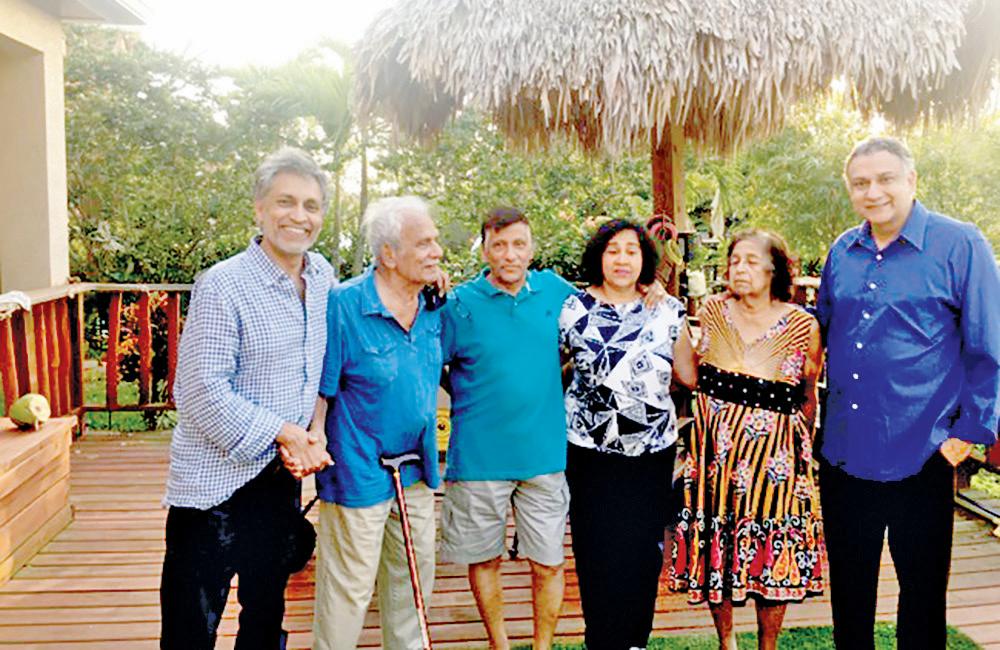
made the informed choice to present him with the option.
Guyana Times recently sat down with Dr Ramgopal, who shared his story – from
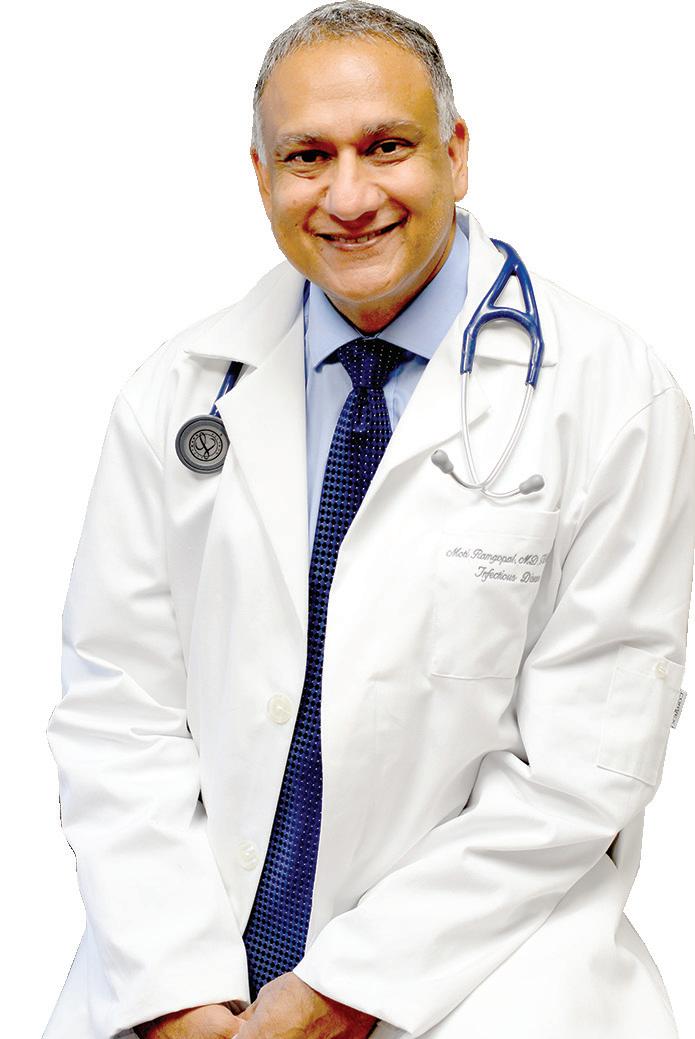
being raised in Station Street, Kitty, Georgetown, to establishing one of the leading Clinical Trial Sites for infectious diseases in the US.
Dr Ramgopal hails from a family of high achievers, with his father being Lalta Ramgopal – former General Secretary of the Guyana Rice Producers Dr Moti Ramgopal Association “Everybody had said why and an attorney. He has five you want to do infectious dissiblings and his eldest brothease but I saw it was the most er and sister are also lawyers complete form of medicine while his other brothers are mentioning that infections can into finance. affect your brain, your sinuses,
He was raised in Kitty your heart, your lungs, your and attended the Rama kidneys, your gastrointestinal Krishna Primary School and system, your liver…There is a wrote the Common Entrance process whereby infections can Examination and gained a get better or it can get worse. place at Queen’s College in You can die from an infection 1976. In secondary school, he very very quickly and it is the was well versed in sports and one disease state where you was a master at chess. He was can actually make such a prothe country’s junior champi- found impact on somebody’s on for two years in a row and life. then represented Guyana at “I think it became very imvarious levels in a number of portant for me to recognise tournaments. that I can make such a pro-
He completed his second- found impact on people’s lives ary education in 1983 and be- by treating them very quickgan teaching mathematics and ly seeing their recovery and physics at the same instituI felt drawn to infectious distion. The then young teacher ease from that period of time,” received a Government schol- Dr Ramgopal recounted. arship to study Medicine at the He moved back to the University of the West Indies, United States and settled in Mona Campus in Jamaica. Fort Pierce and started his priAfter he received his medical vate practice in 1999. His comdegree from the University of munity was a small one but the West Indies, he moved to had a whole host of issues that the Bahamas where he spent ranged from a steady climbing three years. HIV infection rate to low or no
When he moved to the insurance. It meant that his Bahamas, the Human services were needed and he Immuno-Deficiency Virus answered the call. (HIV) was wreaking havoc and To date, Dr Ramgopal has it was there he was introduced never turned away a patient to the world of infectious disbecause of a lack of finances. eases. He began researchHe noted that he is not in the ing the field and became even profession for the money rathmore fascinated with his diser it is the results. coveries. During his Fellowship days
What amazed him the most with the University of Miami, was the fact that microscopic he was involved in clinical viruses and bacteria were be- trials in fungal infections in ing treated to lower or elimi- transplant kidneys, so he denate infections without ever cided that he wanted to conbeing seen. He wanted to be a tinue in the line of clinical tripart of treating those diseases als. However, he knew that he and coming up with plans to needed to work on something prevent those infections. different and what affected his
This led to him ap- community. plying to be a part of the Internal Medicine Residency HIV clinical trials Programme at the Bon In an effort to address the Secours Hospital in Detroit, needs of his community, Dr Michigan. Upon completion Ramgopal knew he needed to of the Residency Programme, do something about the steady Dr Ramgopal completed climbing HIV infection rate in a Fellowship in Infectious Fort Pierce. He took the deciDiseases at Jackson Memorial sion to begin clinical trials in and the University of Miami HIV. School of Medicine. “I said I really want to get
After he completed his two- involved with clinical trial for year Fellowship, Dr Ramgopal HIV so I started my own clinreturned home to Guyana ical trial unit with 2-3 of us and took up a post with the and I said that let’s start clinGeorgetown Public Hospital ical trials in the new drugs. and also began teaching at New drugs mean that a drug the University of Guyana’s before it is being approved by School of Medicine. He stayed the Government, the FDA (has in Guyana for six months be- to be tested). I wanted to be infore he came to the realisation volved in these cutting-edge that he would be stuck in a cy- stuff, recognising that here is cle of just tending to patients the virus, how does it attach, and teaching. He knew that he where the medication is gowanted to do more so in order ing to work, what’s the mechto do that, he needed to leave. anism,” he said.
CONTINUED ON PAGE 15
FEATURE 15 SUNDAY, OCTOBER 18, 2020 | GUYANATIMESGY.COM
From Georgetown to Florida: Dr Moti Ramgopal... FROM PAGE 14
He started his first clinical trial in 2006-07.
In order to be able to successfully market a new drug, there are three steps the clinical trial must undergo. The first phase is where a small number of patients are placed on the drug and observations for side effects and dosage are made. Phase two increases the patient number and investigates the drug more in-depth. The last phase is the compilation of the data and presentation of it to the Food and Drug Administration.
When he commenced his first clinical trial, Dr Ramgopal was still working at the hospital and running his private practice all while travelling back and forth between Guyana and the US as part of the PepFar Project which was initiated by President George Bush.
He would leave the PepFar project in 2012 to focus more on his trials and clinical research as well as further develop his Clinical Trial Site.
“When you look at every HIV medication that we have studied for the last 15 years, I have been involved in either phase 2 or phase 3 of the study. I haven’t developed a medication per se but I bring it to the market, meaning I will enrol patients, I will study the drug in patients, the effects, the side effects and then I will publish (articles) on those studies with other people,” he said.
Dr Ramgopal has been published in all of the major scientific journals. In fact, he is one of the few physicians that has been published in such an extensive way. That is so because of how he approaches his writing. He not only looks at and discusses the results of his studies and trials, rather he goes in-depth - explaining the data and how the findings are arrived at. He looks at the scientific data and is also part of a team of physicians that would present the drug findings to the FDA for approval so that they can market it.
Currently, he is involved in three clinical trials for the cure of HIV which is very unusual because there are not a lot of clinical trial sites in the world involved in such work. He is excited to be a part of what he foresees as the solution to the HIV disease. However, he is also cognisant of the fact that most of the drugs that he is presently working on would not be heard about for the next five years since the process to get them to customers is such a long and gruelling one.
“In the future, take HIV for example, people are taking pills every day and in about three to five years they will be taking an injection. Actually three months from now they will be releasing an injection to give one a month or every two months. So pills will be replaced by injectables and in time instead of taking the pills every day, we will take the pills once a week or once a month and these are the studies that I am involved in from very early,” the Infectious Disease Specialist said.
The cure for HIV
The cure for HIV is interesting because, here is a virus that has been around for over 25 years and scientists have not really developed a vaccine for it as yet. When one looks at the amount of information about the virus that is available, it is puzzling as to why the cure has not yet come about. But Dr Ramgopal explained that it is not as easy as it seems on the surface.
He noted that while he does not aid in the creation of the drug, he has baseline knowledge of how the process works and extensive knowledge of how the HIV virus operates. The drug needs to be created to address the way the virus operates but doctors are still determining how that is.
“We understand that here is a virus that now attaches to a certain site on the CD4 cell and the virus now enters into the cytoplasm of the human cell and then the virus ultimately integrates into our DNA and then the virus goes into hiding and it stays forever. So we developed medications which can actually stop the virus from replicating in the blood, but the million-dollar question is the virus hides, we know where it hides and we know it hides in reservoirs, but the problem now is these reservoirs are cells that are slowly multiplying or stays dormant for many years. So the moment you stop the medication, the virus starts replicating and coming to the forefront.
“So the strategy for curing a person with HIV who have been on the treatment for years and have suppressed the virus, is to determine how do you now stimulate the reservoir to produce the virus and completely kill it. The clinical research I am doing for the cure for HIV has to do with using medications called toll-like receptors (TLRs) to stimulate these reservoirs to multiply so we can kill it. It is called kick or kill strategy,” he explained.
Dr Ramgopal and other researchers have found that with the antibodies and other medication, they can actually stimulate the immune system to kick this virus out.
“So I think in a long time we actually have a mechanism that we are working on that we do believe we can cure it. We are now in the phase one studies of most of these medications.”
His role as the investigator is important since he is needed to deliver the drugs to the patients and to track the patients, understand the data, track their vitals and then release that data to the FDA for drug approval.
COVID-19
Currently, Dr Ramgopal is running about 7 clinical trials with COVID-19 patients. The antibody cocktail that President Trump received is one of them that he has been working on for over three months now.
“The coronavirus is one of the many coronaviruses so when you look at a virus you ask many questions. So like how does this virus replicate, where does it replicate and how does it affects someone’s immune system and what really happens. So we call this coronavirus a novel virus because we have never seen it before, we have never seen any virus behave like this.
“So there is a lot of steps in the process of how we stop this virus from replicating so that is how the remdesivir story came about because it was developed against Ebola virus and it really didn’t have a good activity…When we look at a drug like remdesivir it will attack the virus but still even though we give patients the remdesivir we still see they have pulmonary complications and the question is why? And then we start to look at the immune system.
“We produce antibodies naturally and over the last 1015 years, we have genetically manipulated antibodies where we can produce antibodies against certain parts of the virus. The medication President Trump received is called Regeron COV2 and this medication has 2 components – it has 2 antibodies that was developed against the virus - one against the spike protein that penetrates to the lung and attaches and develops a replicative cycle whereby it pushes the immune system to the point where it becomes hyperactive…the next part is an antibody against the virus itself,” he explained.
Dr Ramgopal said he has
Dr Ramgopal with his father, Lalta Ramgopal
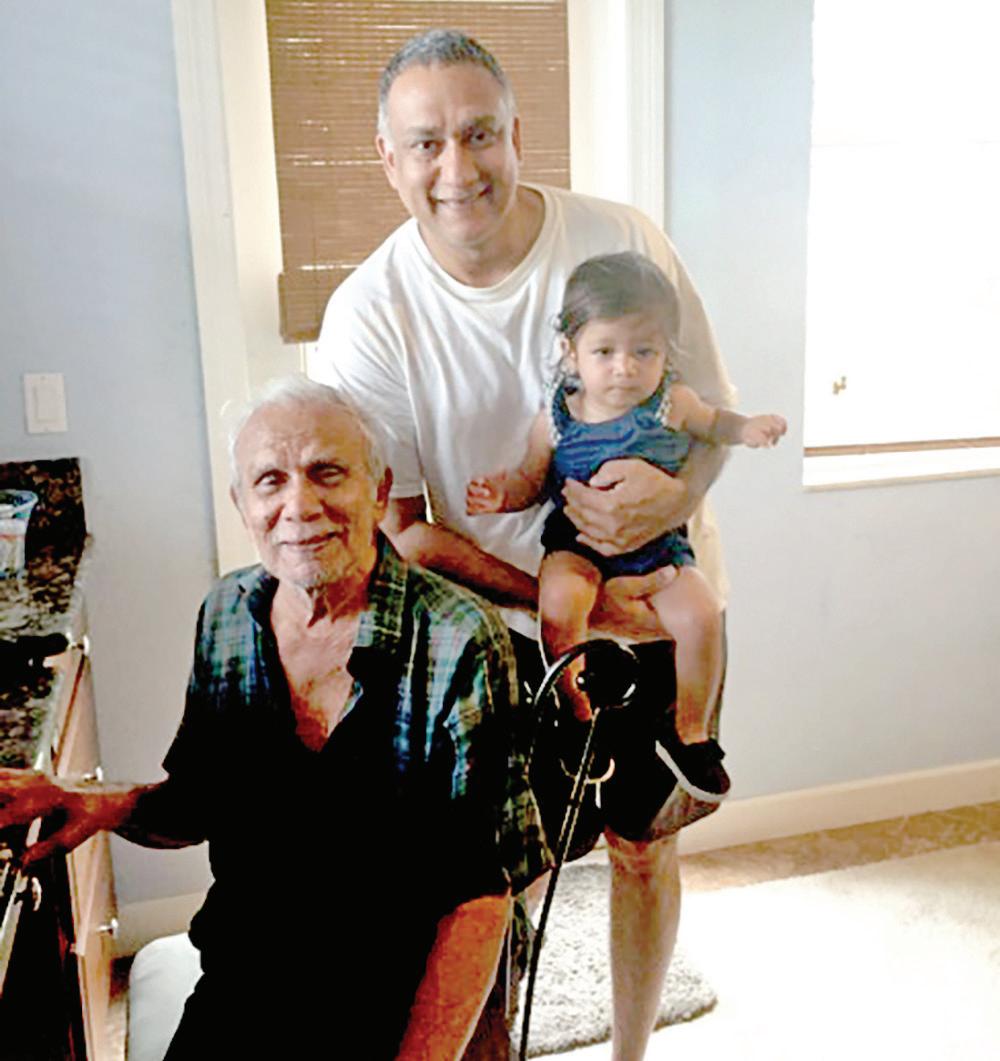
not gotten involved with the COVID-19 vaccines because of the fact that he feels the need

to find treatment methods that work so they can bring the infection rate down.
Small country boy
For Dr Ramgopal, he never really left Guyana because he will always consider here home. While he is able to do exciting things in the US, he is taking steps to bring those same services to Guyana. He intends to open an International Centre for Research here in Guyana.
He already has the Midway Centre on Carmichael Street and is gearing to move the operation to Kingston at a new location. He is hopeful in a few years’ time to be able to bring clinical trials to Guyana.
“I go to meetings and at the table are the top guys in infectious diseases in the county and around the table, I am the only one that is not at the university and I feel honoured and privileged that here is a guy from Guyana sitting at the table with the leading infectious diseases doctors around and making these decisions and having discussions.”
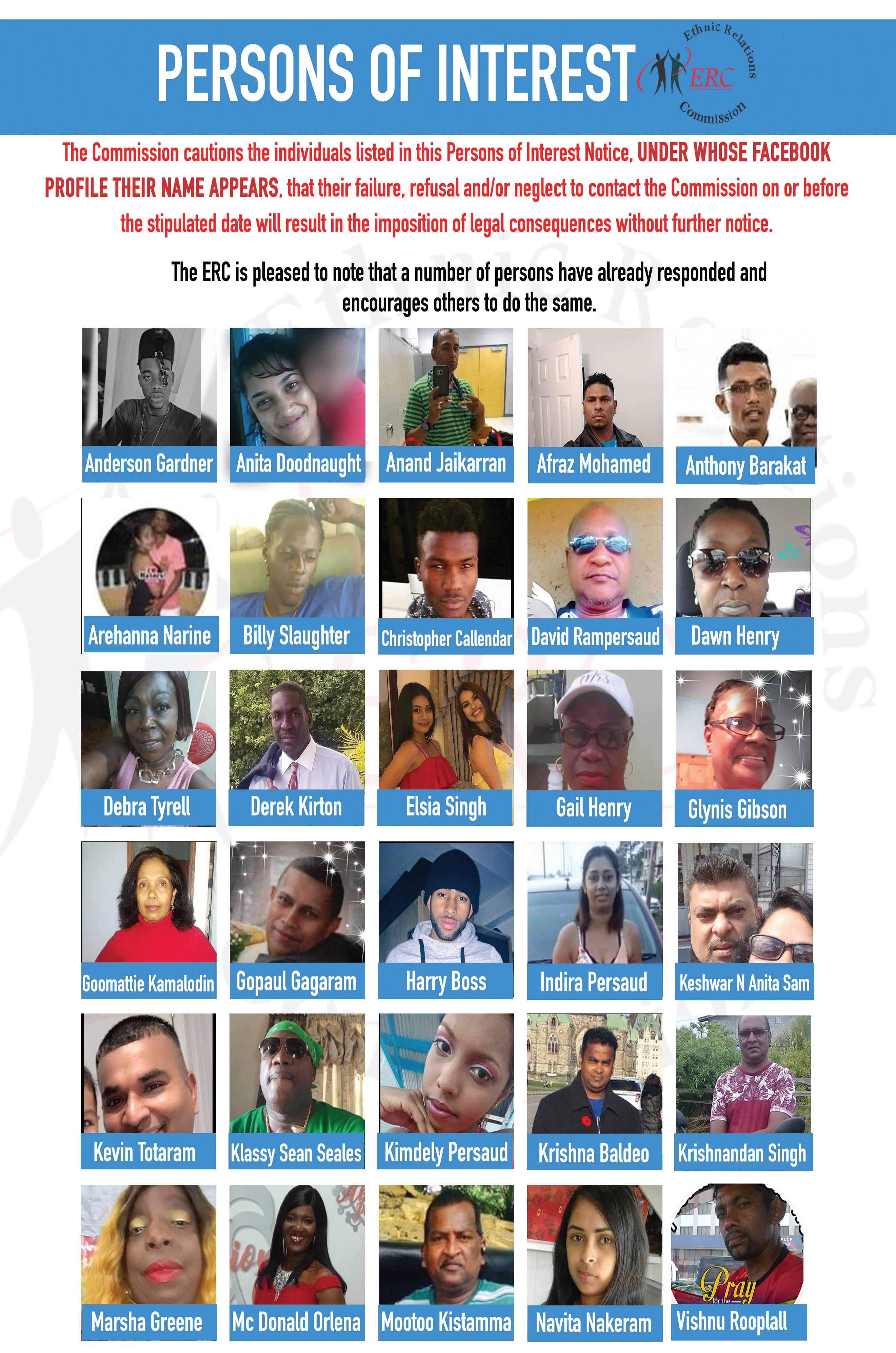
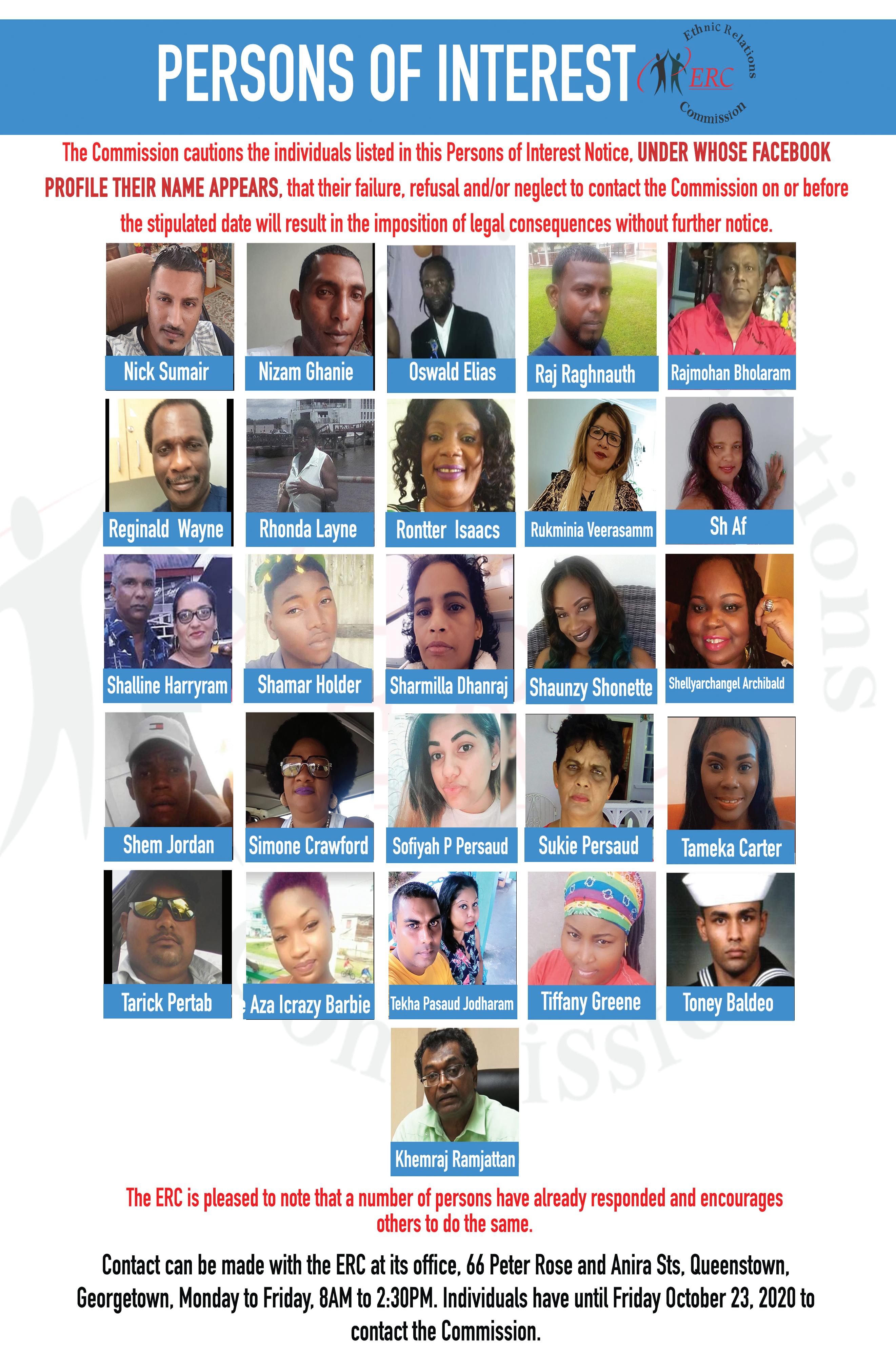

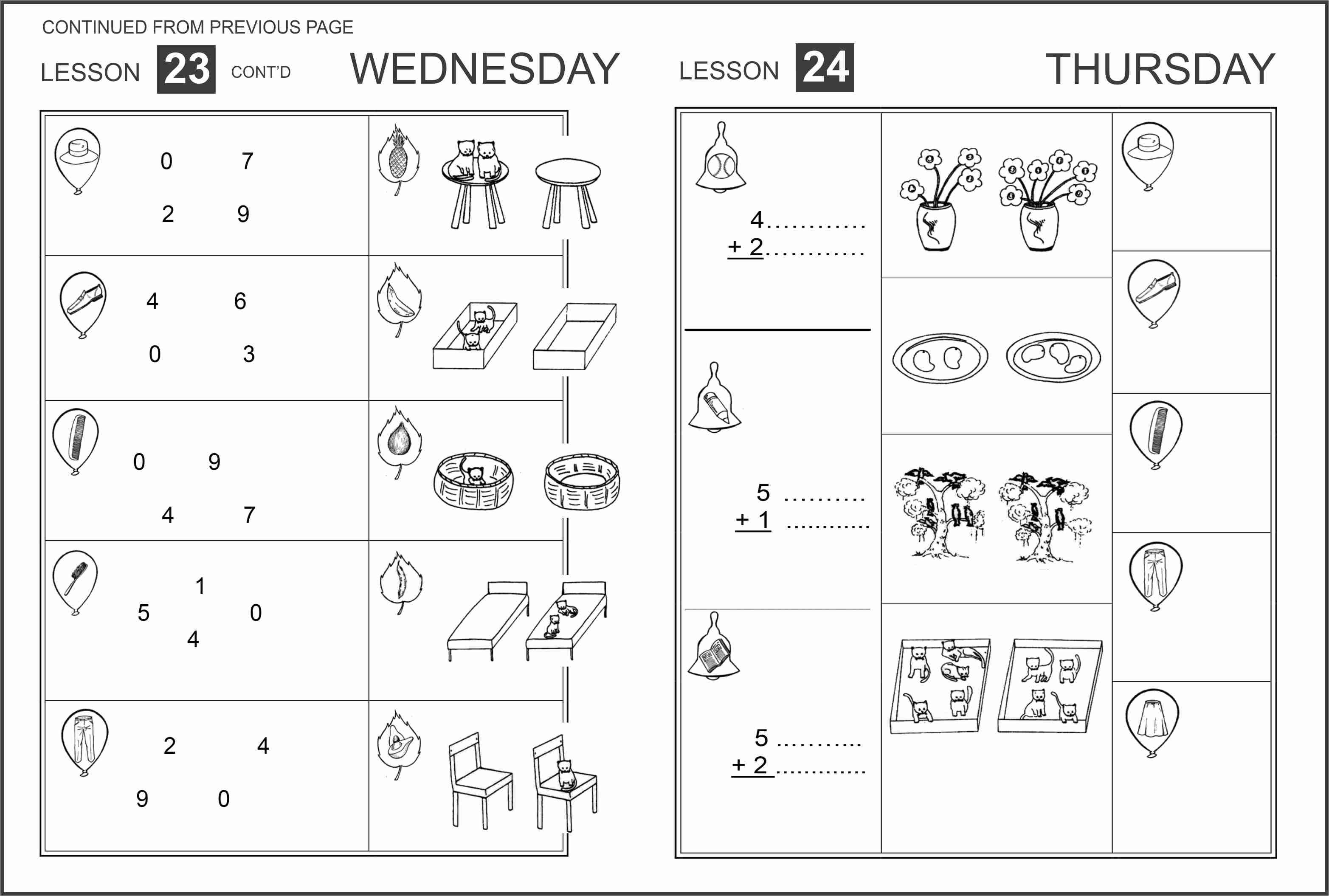
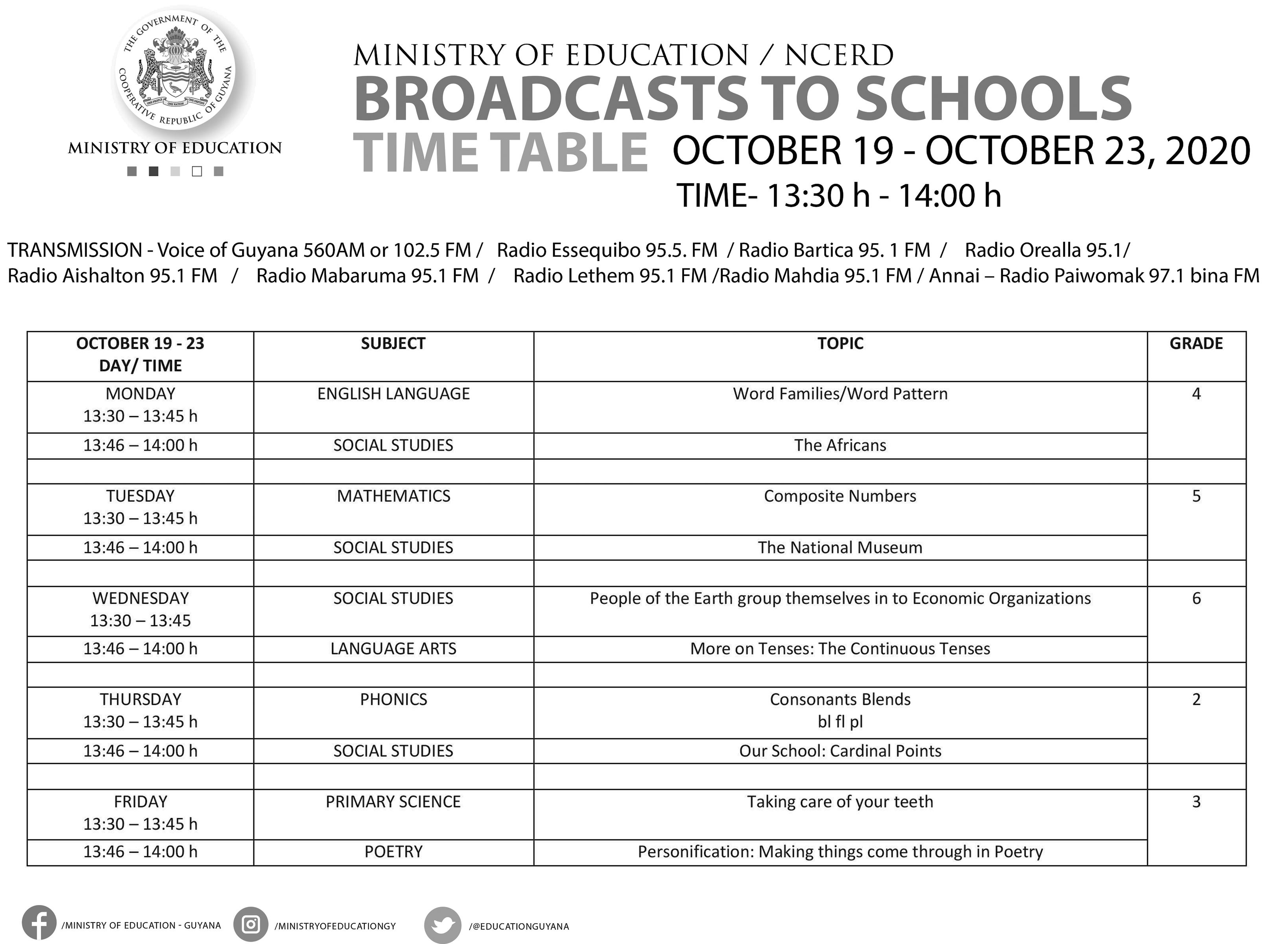
22 FEATURE SUNDAY, OCTOBER 18, 2020 | GUYANATIMESGY.COM Dr Shilindra Rajkumar, improving Guyana’s plastic surgery capabilities one patient at a time
…while mentoring young doctors as part of a succession plan
By Lakhram Bhagirat
Guyana has a long way to go in relation to the development of its medical services but there are several doctors within the healthcare system that are actively working to expand their knowledge and bring world-class services to the Guyanese people.
Notably, these doctors are performing procedures that one never knew that Guyana had the capability to offer.
Among those doctors that are actively working to improve the quality of care delivered in Guyana is Dr Shilindra Rajkumar – who has been working in plastic surgery for a number of years. He is currently heading the Georgetown Public Hospital’s Burns Unit and is the Chief Plastic Surgeon at the institution.
With the speciality comprising of three components – burns, reconstruction and alteration – Dr Rajkumar has been mostly focusing on the first two but recently began delving into the alteration aspect which is commonly referred to as cosmetic surgery.
Dr Rajkumar comes from humble beginnings and a family that has always been focused on attaining a high quality of education. Being the youngest child meant there was some amount of pressure placed on him to ensure that he lived up to the expectations of his parents and performed as well as his siblings.
His father always wanted a doctor in the family and he was the chosen one.
Hailing from the Essequibo Coast village of Johanna Cecelia, Rajkumar wrote the then Secondary School Entrance Examination (SSEE) and gained a place at President’s College but instead opted to attend Queen’s College. There he spent seven years and upon completion of his A-Levels, he began furthering his studies at the University of Guyana (UG).
He initially began studying biology but after the first year in University, he moved over to the Medicine Programme where he commenced his medical journey. He completed his medical studies at UG in 2002 and started his internship at the Georgetown Public Hospital Corporation (GPHC). There, he worked for a year and a half after which he decided to do a Diploma in General Surgery at the same hospital and through the University of Guyana.
He continued working at GPHC in general surgery and was then offered a scholarship to do plastic surgery with the University of Ottawa in Canada. He took up the offer and thus commenced his plastic surgery journey.
The focus there was burns, reconstructive surgery and cosmetic surgery with a little bit of pediatric plastic surgery. The idea, for the then young doctor, was to come back and work in Guyana with Georgetown Hospital and continue his quest to improve the medical sector by offering improved services in his field.
When he returned in 2010, he recommenced working with the GPHC in the hospital’s Burns Unit where there had been a great demand for burns and reconstructive surgeries and has been there ever since working in and heading that department.
“There was a lot of persons in need of cosmetic surgery but because of the demands for burns and reconstructive surgery over there, there wasn’t enough space to do cosmetic surgery on a regular basis at

Georgetown Hospital,” he said.
Seeing the demand for the cosmetic aspect of plastic surgery, Dr Rajkumar once approached the hospital’s administration for them to commence offering that but there was some resistance and that never materialised. That, he explained, was due to the fact that there was the debate as to whether a public institution should offer cosmetic surgery at the expense of patients who are already admitted for reconstructive surgeries.
The debate stemmed from the fact that a single cosmetic procedure takes at least 2 1/2 hours and in that time two reconstructive surgeries could have been completed. So, the hospital thought the practical thing to do was to refrain from venturing into that field.
However, earlier in 2020 he received an offer from Surgical Associates based at the St Joseph Mercy Hospital for a partnership to extend his plastic surgery services and venture into the cosmetic aspect of it.
“Ever since then it has been slow at the start but we can see that the progress is steady and more and more people are getting to know about us and the services we offer and we are getting a steady flow of patients now,” Dr Rajkumar said.
For him, he never really thought much about getting into the cosmetic aspect of his speciality since he enjoyed dealing with burns and reconstruction. However, he is now beginning to like that aspect of his field and is seeking to expand that reach.
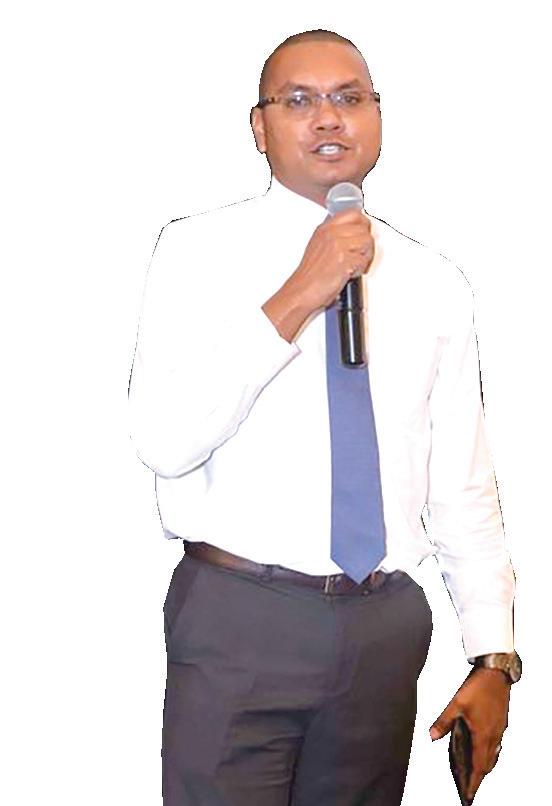
CONTINUED ON PAGE 23
FROM PAGE 22
“The burn and reconstructive surgery – you don’t get to choose your patients. They are handed to you and sometimes they come in a very bad state and you have to think out of the box and it is challenging and fruitful and very satisfying to do reconstructive surgery. With cosmetic surgery you get to plan them better, you get to see your patients, you get to create the scars and surgery from inception and the patient satisfaction is better.
“With burns and reconstructive surgery, there is always the challenge of where these patients would have been severely burned. Physiologically they are not up to scratch. A lot of your surgeries you have to be a lot more cautious but in cosmetic, the majority are young healthy patients,” he explained.
Through Surgical Associates and the St Joseph Mercy Hospital, Dr Rajkumar is offering a series of cosmetic procedures. He is now able to offer liposuction to any part of the body, abdominoplasties (tummy tucks), breast reduction, breast lifts, wound reconstruction, fused finger separation and cleft palate procedures.
He explained that liposuction can be offered to any part of the body but the majority of the patients opt for liposuction to the abdomen. As it relates to abdominoplasties, most of the patients are women would have had multiple pregnancies which left them with an increase in abdominal fat and redundant skin around the abdomen coupled with stretchmarks. His job is to flatten the abdomen, fix the excess skin and remove the stretch marks.
“We see very enlarged breasts often and we call that mammary hyperplasia. For some reason, there are a lot of persons with very enlarged breasts and this has a significant impact on their shoulders in terms of the pain to carry heavy breasts around and we offer breast reduction surgeries. We do two to three breast reduction per month. We also do breast lifts because a lot of patients after breastfeeding would have long sagging breasts. So, we do breast lifts to kind of revert the breast to a more anatomical, more cosmetic position which a lot of patients are grateful.”
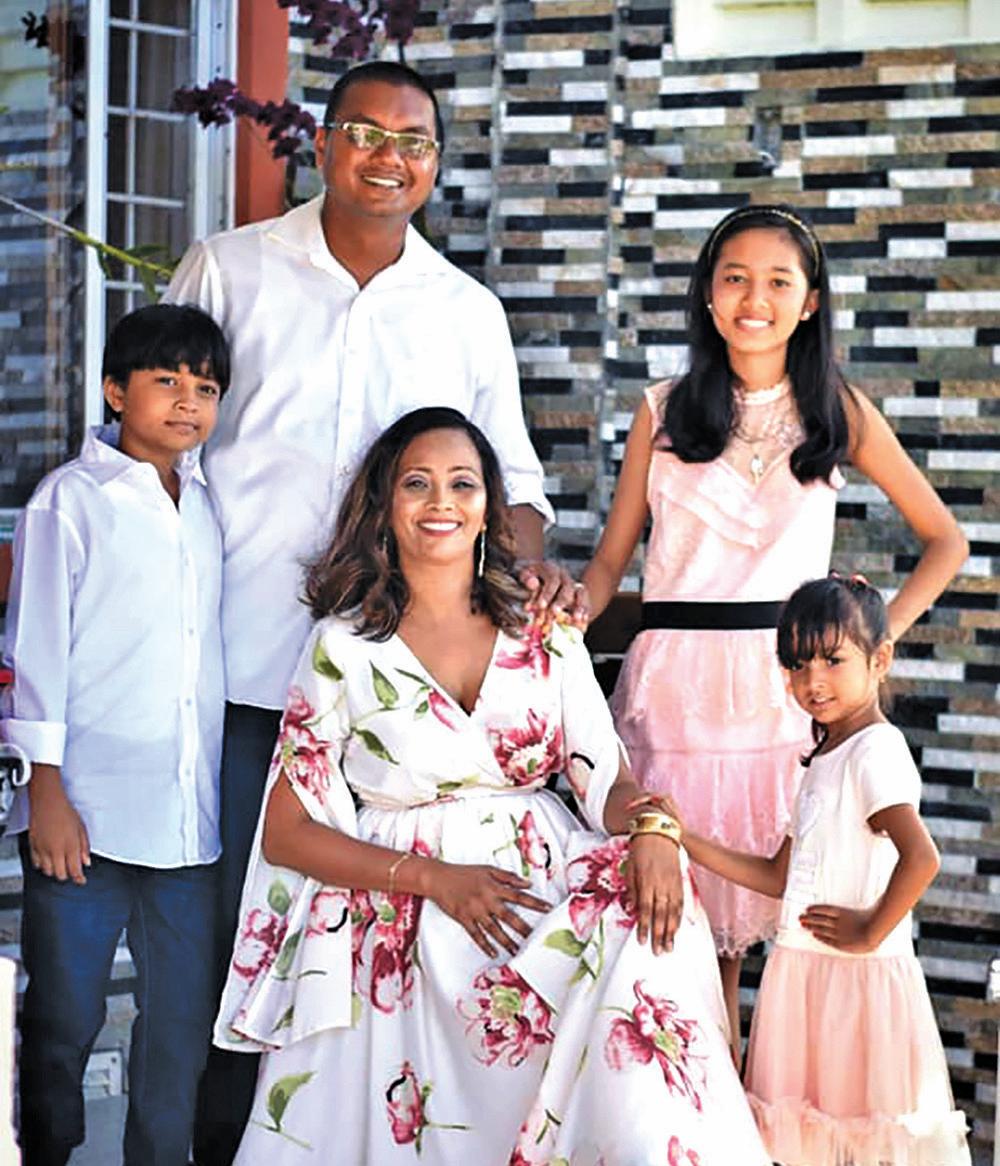

Dr Rajkumar is married with three children. His eldest child just sat the National Grade Six Assessment (NGSA) examination and secured a spot at Queen’s College. He thinks she is on the path of following in his footsteps. Both his daughter and son are avid chess players and are, in fact, junior chess champions.
Meanwhile, his youngest is in nursery school. He credited his ability to venture Dr Rajkumar and his family into plastic sur- his work by itself is chalgery on the sacrifices his wife lenging, he has a capable made since they had a young team which he moulded and child and she was pregnant trained over the years so that at the time he was offered his they can function without him plastic surgery scholarship. being present there. She allowed him to chase the Teaching is also a big part opportunities for betterment of what Dr Rajkumar does while she held the fort down. and for him, it is something
For him, balancing work he is passionate about. He is and his personal life is not an the principal tutor for genereasy task but over the years al surgery at the University he has developed a hack that of Guyana, so he coordinates makes it manageable. While and teaches all of the third
and final year medical students. He mentors and prepares them for their exams and has been doing that for about eight years now. “Teaching is one of the things I have a passion for. Teaching and seeing your students develop gives you the drive to continue in this field, to continue reading and being abreast with medical knowledge. I don’t think I would have the drive to continue if it wasn’t for teaching,” the accomplished doctor stated. Dr Rajkumar has very distinguished goals set for the long term and short term development of the plastic surgery services in Guyana and it begins with the imparting of the knowledge he has accumulated. He is open to sharing it with everyone who is willing and able to learn.
He is focused, at this time, on seeing his practice developing and receiving the recognition so that they are able to perform more advanced procedures. He has plans in the pipelines to do partnerships with overseas-based plastic surgeons who would come and assist with some of the more complicated patients, help with the teaching and with some of the training of persons as well.
“In the long term, I am looking at getting my staff trained and certified in this field so that they can actually take over and run with this field say 5-10 years from now. I am looking at having somewhat of a succession plan so that my younger, dedicated staff can take it over and develop it more.
“Over the last years I have been working on a curriculum so that we can start teaching, sharing this knowledge and skill. I am 40 (years old) and I see myself in retirement by 55 so I want to consider by that time that we should have a well-staffed and functioning department without me,” Dr Rajkumar noted.
He is continuing teaching and building his practice for now. He also said that the prices for cosmetic procedures are competitive and, in most cases, amounts to just a fraction of what one would expend to have the same procedures done overseas.
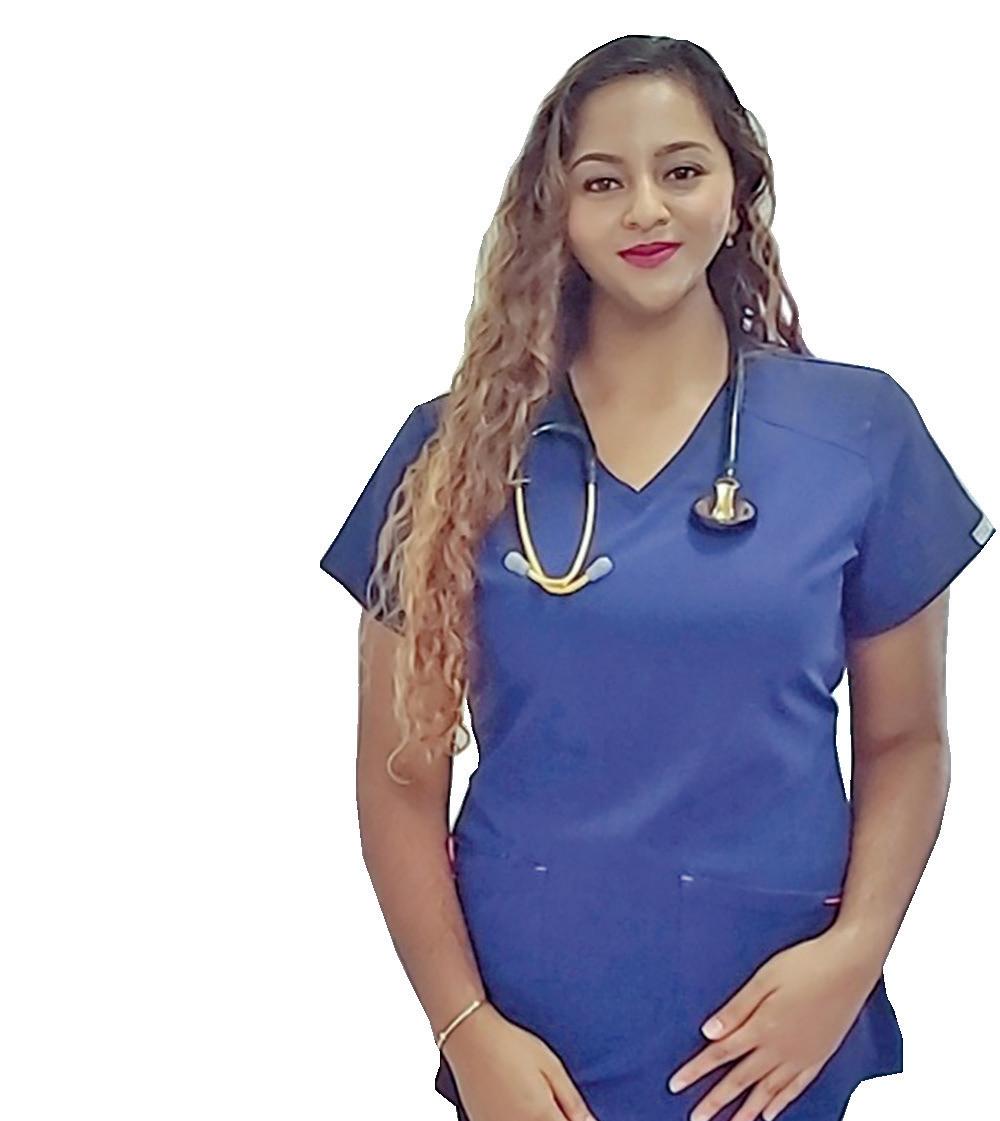
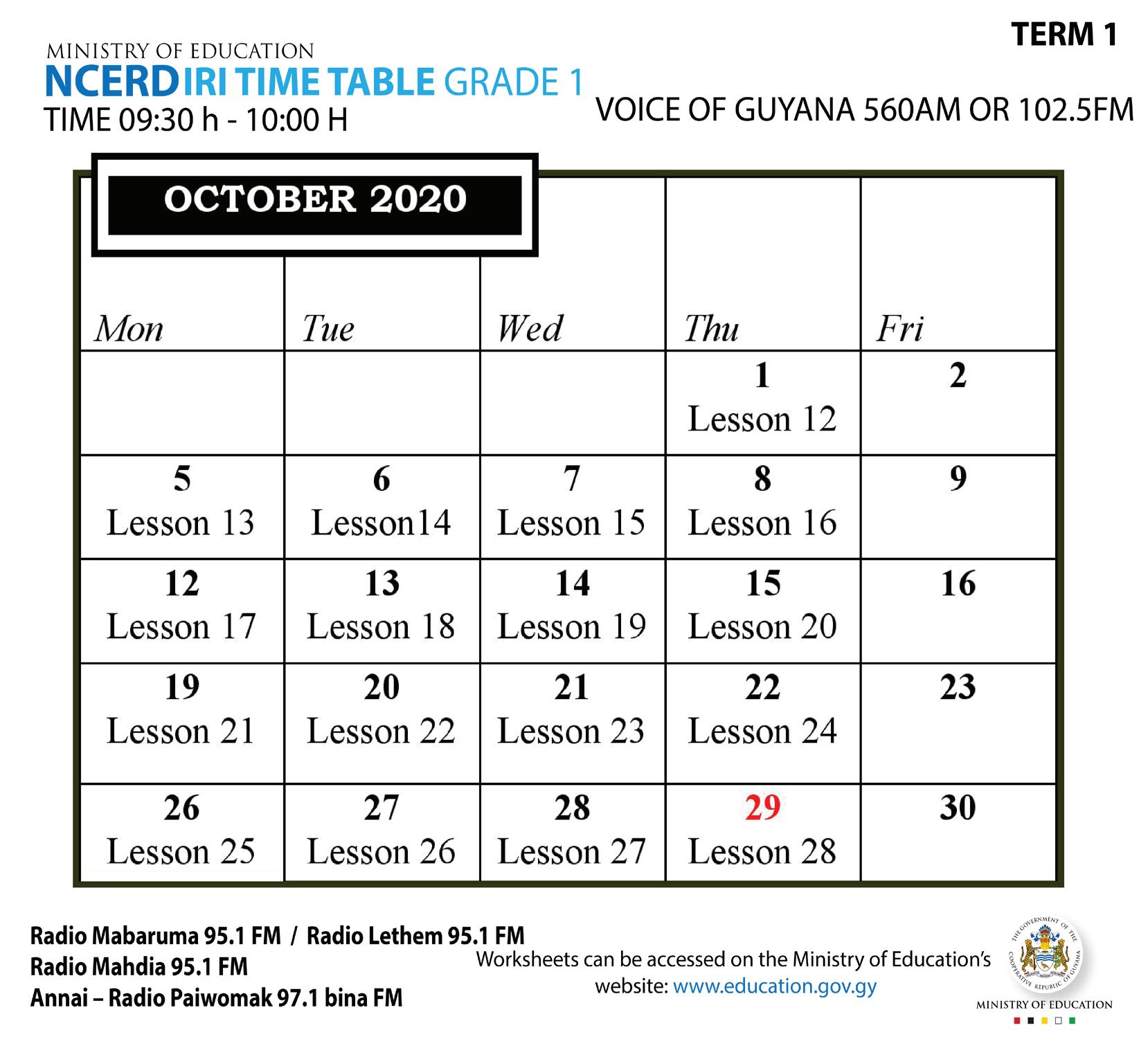
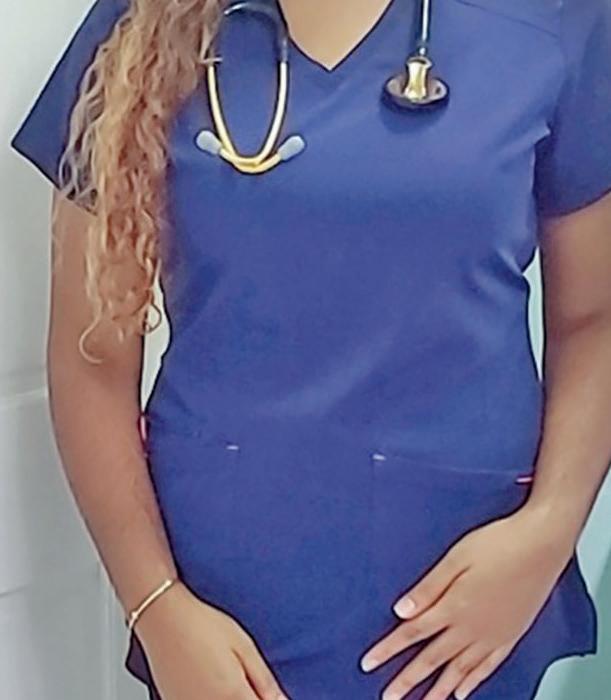
24 FEATURE SUNDAY, OCTOBER 18, 2020 | GUYANATIMESGY.COM Breast Cancer Awareness: Give support, save lives – Dr Shivannie Persaud
Dr Shivannie Vanada Persaud is a bi-lingual, Cuban- at the earliest stage before presenting with symptoms (male hormones) and higher levels of estrogen (female trained Medical Doctor who recently started her due to the fact that treatment options are more hormones) and they often develop male breast growth very own clinical practice at Medical Arts Centre numerous, more effective, less toxic and generally leads known as Gynecomastia. Ltd. She currently offers free clinical breast exams at the to better outcomes than late-stage cancers. • Radiation exposure. A man who has been clinic – Dr Shivannie V Persaud Family Health & Wellness treated with radiation therapy. Clinic. Risk factors for women • Obesity. Causes a hormonal imbalance
Apart from her medical practice, Dr Persaud dreams • Age. Women’s risks for developing breast • Liver disease. of becoming a medical diagnostic imaging specialist cancer increases with age. • Alcohol. Excessive alcohol drinking leads to or radiologist. She is currently a General Medical • Menstruation at an early age (usually before damage of the liver Practitioner within the department of Radiology at the 11 years old) • Estrogen treatment. Men who received this Georgetown Public Hospital Corporation. • Never having giving birth or giving birth at an treatment for prostate cancer. As well as transgender
When she is not saving lives, Dr Persaud is an older age. (Pregnancy after 35 years of age is considered individuals who take high doses as part of sex Executive Member and player at the Guyana Badminton high risk.) reassignment Association. • Menopause at a late age. After 55 years of • Testicular conditions. Undescended testicles,
With October designated at Breast Cancer age. having mumps as an adult or having one or both testicles Awareness Month, Dr Persaud wrote the following • Dense breast tissue surgically removed (Orchiectomy) piece, in an effort to educate and create awareness • A family history of breast cancer. This accounts One should be familiar with how their breasts on breast cancer. She is encouraging everyone to give for 20- 25 per cent which includes both mother’s and normally look and feel and should report any changes to support to breast cancer patients and survivors while father’s side of the family. a health care provider immediately. also encouraging others to get examined in an effort to • Use of hormones such as estrogen and save their lives. progesterone Common signs and symptoms include:
Breast cancer is a disease which causes abnormal • Obesity • The appearance of a new lump or mass on abnormal skin colour, texture, temperature, dimpling, cell growth which invades healthy cells in the breast, • Excess alcohol consumption the breast which is painless, hard or has irregular edges. redness, rashes, visible lumps or changes in the nipples. the surrounding tissue and which may spread to other • Having had radiation therapy to the chest However, it is not uncommon for them to be painful, soft You may be asked to lift your arms over your head, areas of the body. These cancer cells usually grow out of before age 30 or round. hang them loosely or rest them on your hips during this control and form a tumour which is most commonly felt • Gene mutation known as BRCA 1 OR BRCA 2 • Swelling of the breast even if no lump is felt. procedure. as a lump. Having said this, it is important to understand • Swelling of the nipples. Next, your doctor will perform a manual that some breast lumps can be non-cancerous or not Risk factors for men include: • Pain to breast or nipple. examination of your breast. This is done with you lying life-threatening but may increase one’s risk of getting • Age • Breast skin or nipple that is seen red, dry, down which enables the breast tissue to flatten over the breast cancer. • Family history. Which includes blood relatives, flaking, thickened or hardened. chest walls. Your doctor will then use the pads of his/
Breast cancer can affect anyone, including men. male or female. • Nipple retraction (turning inward of the her fingers using firm pressure to assess deeper tissue to However, it is more common in women. It is important • Gene mutations. BRCA 1 affects men more nipple) or unusual secretions (watery, milky, yellow or feel for lumps including assessment of their size, shape, to note that your doctor does not necessarily think you than BRCA 2 bloody) from the nipple. whether or not they move within the tissue or to assess have breast cancer if he/she suggests a screening test. • Klinefelter syndrome. A birth condition which • Small swollen lumps called lymph nodes the presence of pain or soreness. The goal of breast cancer screening is to find the cancer leaves men infertile due to lower levels of androgens under the collar bone or under the arm. Usually, a lump which appears soft, round, smooth and movable are likely to be non-cancerous tumours Screening recommendations or cysts. A lump which is more likely to be cancerous is Screening is key to early detection and leads to a described as hard, firmly attached within the breast and more favourable prognosis. oddly shaped. ● Women who are considered average risk. Your healthcare professional will also check under Those are women who have no specific risk factors your arm and above and below your collar bone to look for breast cancer such as no known personal or family for lumps called lymph nodes. history, has not had chest radiation therapy before 30 If there are any abnormal findings, you will then be years of age or a genetic mutation are recommended oriented towards further diagnostic measures. to have a clinical breast examination (CBE) every 1 to 3 years. Other screening tests ● Women who are considered as high risk, such Screening tests help to find early-stage as those with certain gene changes, such as changes in cancers which increases chances of survival. the BRCA 1 or BRCA 2 genes, a family history (a relative, ● Mammography. Mammography is an X-ray such as a mother, daughter or sister) with breast cancer picture of the breast and is used to find tumours which or certain genetic syndromes, such as Li-Fraumeni or may be too small to feel. It is the most common screening Cowden syndrome are recommended to have screening test used to detect breast cancer. done with Magnetic Resonance Imaging (MRI) ● Breast Self-examinations. Recommended to ● Women between 40 and 54 should have a be done monthly. mammogram annually. ● Breast Ultrasound. Uses sound waves sent to ● Women 55 and older may have a a computer to give a visual of the inside of the breast. It mammogram every two years, or they can continue is useful to check for lumps in women with dense breast yearly mammograms. tissue which a mammogram may not have detected. It ● Recommendations for men. Clinical Breast can be used to differentiate between a lump or a fluidExamination is recommended for men with a strong filled cyst and is also useful to guide a biopsy needle. personal history or family history of breast cancer ● Breast MRI. This machine uses strong magnets semiannually/once every 6 months starting at age 35. and radio waves to give a picture of the breast. It is used This is due to the fact that breast cancer in men presents to screen women who are at high risk and not usually at more advance stages than in women. recommended alone as a screening test since it can miss CBE is an exam done by your doctor to check for some cancers. physical changes and lumps in your breast with the aim ● Thermography. This is done with a special to detect cancer at the earliest stage of progression. camera which senses heat to record the temperature It is usually done in your doctor’s office or medical of the skin which covers the breast. The presence of examination room which guarantees you privacy tumours can show temperature changes. since you would be required to take your shirt off. It is comprised of a visual check of your skin looking Early detection is key to saving your life. for differences in the size and shape of your breasts, Get examined!
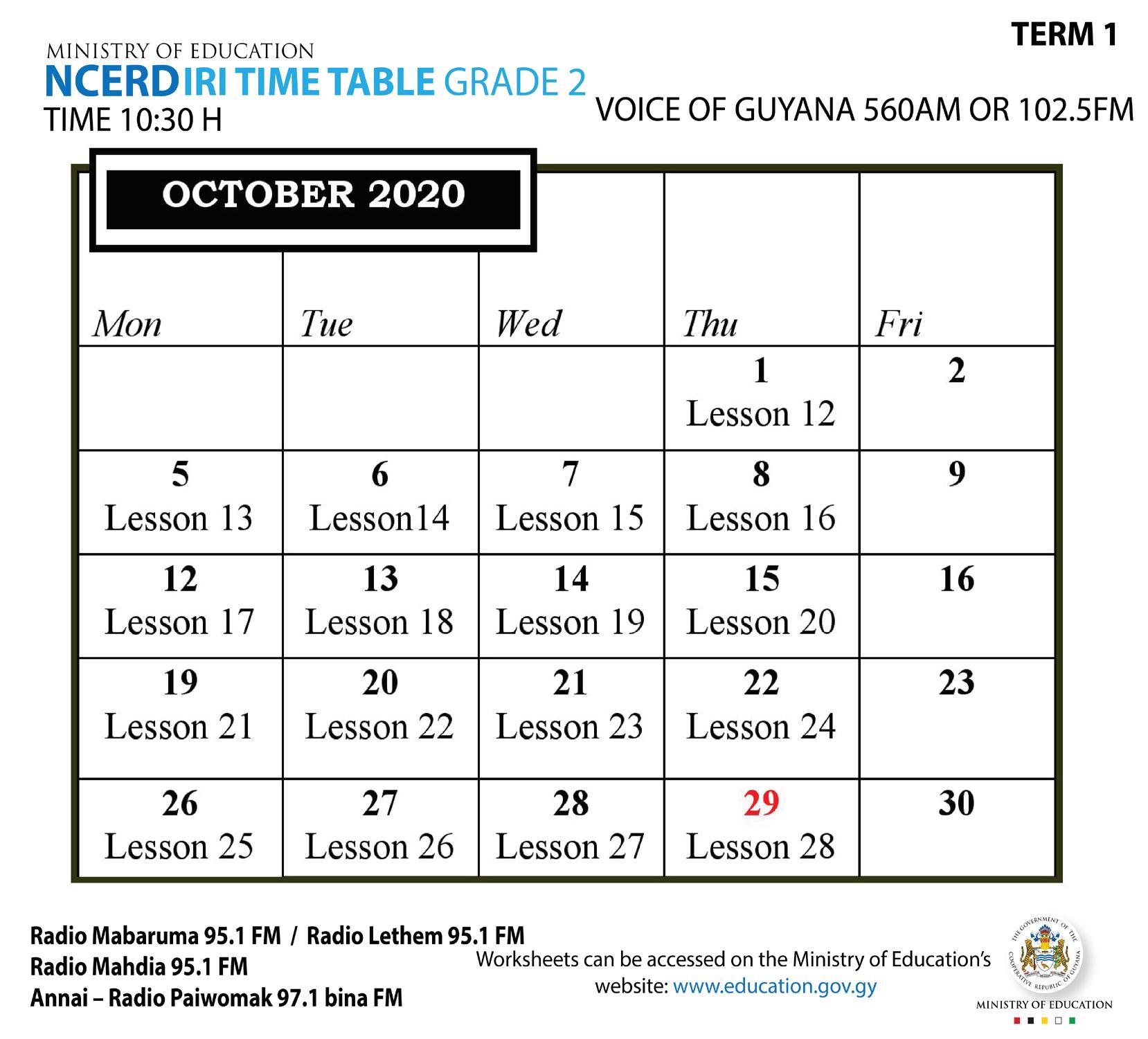
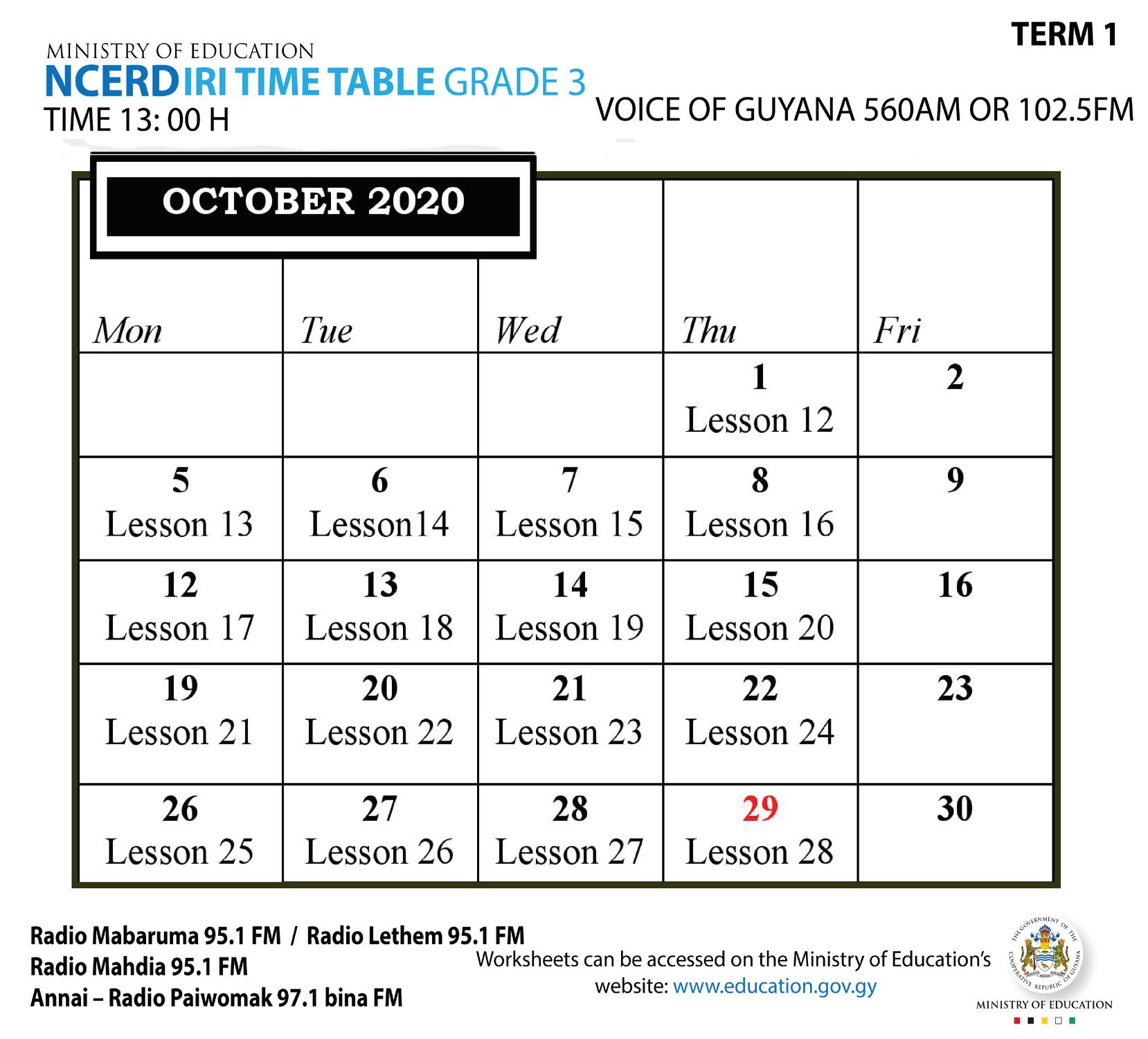
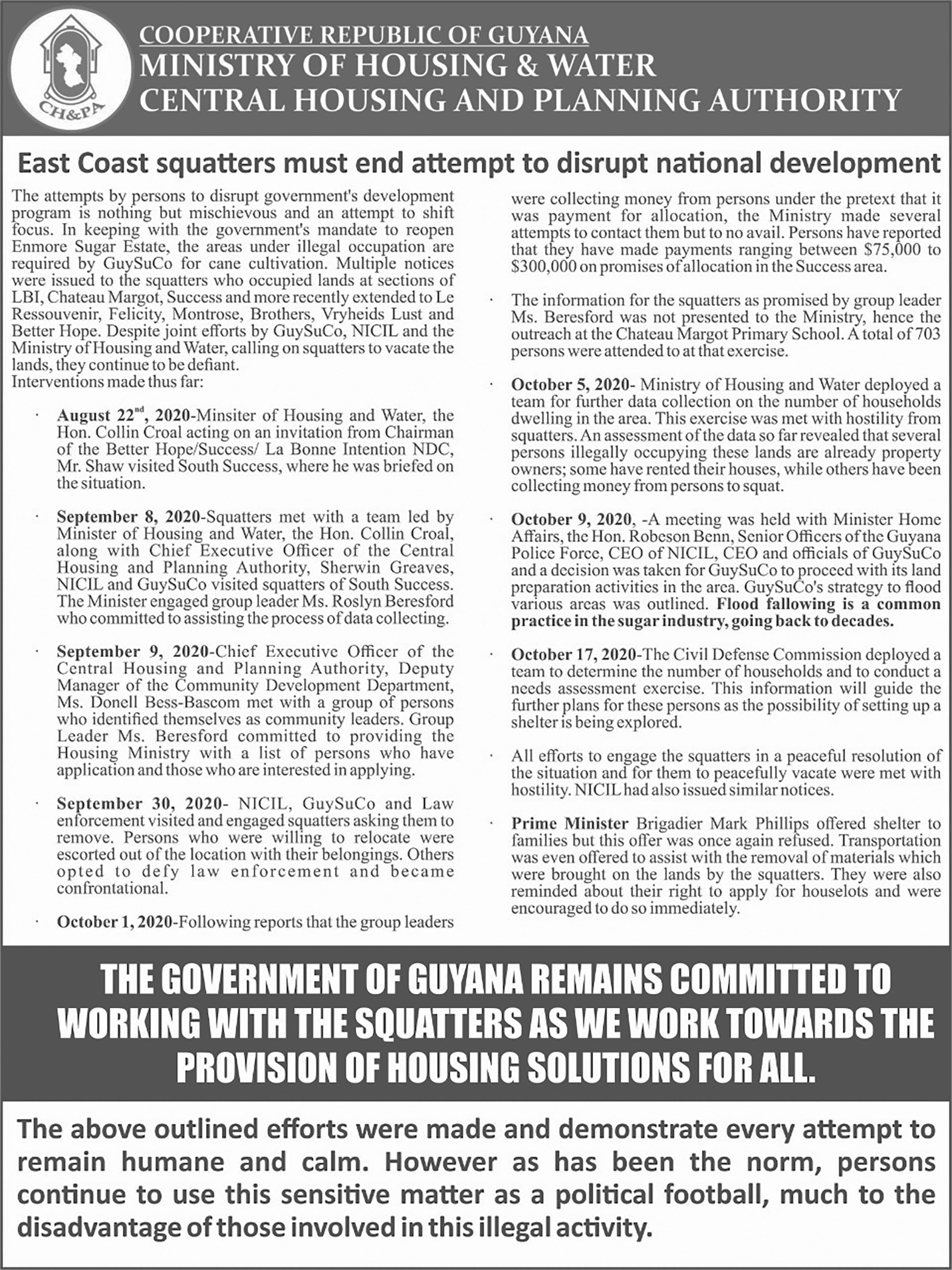

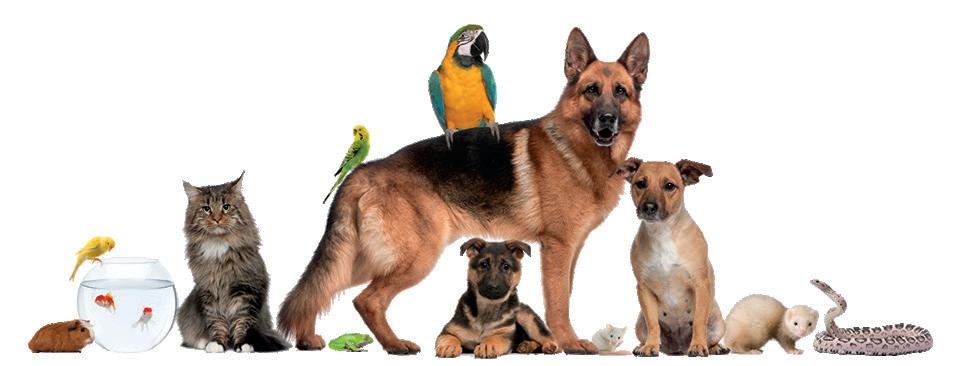
Q: I notice that several of our newborn (3 weeks – 1 month old) puppies cannot walk around like their siblings; instead their legs (front and hind) do a paddle motion, with their legs sprawled like a swimming turtle, to get from place to place.
Need we be worried? Will the pups grow out of it?
A: The pup(s) has (have) what is described as the Swimmer Puppy Syndrome (SPS). In practical, scientific terms, this abnormality is associated with underdeveloped muscles, muscles which are used to pull the legs together. Although this condition (splayed legs) can be exceptional, vets do encounter this problem too often. When I started practice, more than 50 years ago, hardly more than 10 litters would be presented annually with this deformity. Nowadays, vets are confronted with such cases more frequently than we would like to see.
Other names for this Swimmer Puppy Syndrome are documented by Google as swimming –puppy syndrome, flat-puppy syndrome, turtle pup, and so on. Once you, as the caregiver, see this pathetic condition you will recognize it.
Under normal circumstances, the normal newborn pup should be standing and walking, albeit with a wobbly incoordinated gait, by 3 weeks of age. By 4 weeks the gait is much improved. If the splayed legs condition continues, other attendant problems may arise. Since the pup(s) cannot stand, then the chest and abdominal areas are pressed perpetually on the ground. This compromises the breathing and later the improper and insufficient ingesting food. Vomiting and constipation are not uncommon, nor are consequential joint deformities.
So in a nutshell, yes, the caregiver needs to be concerned.
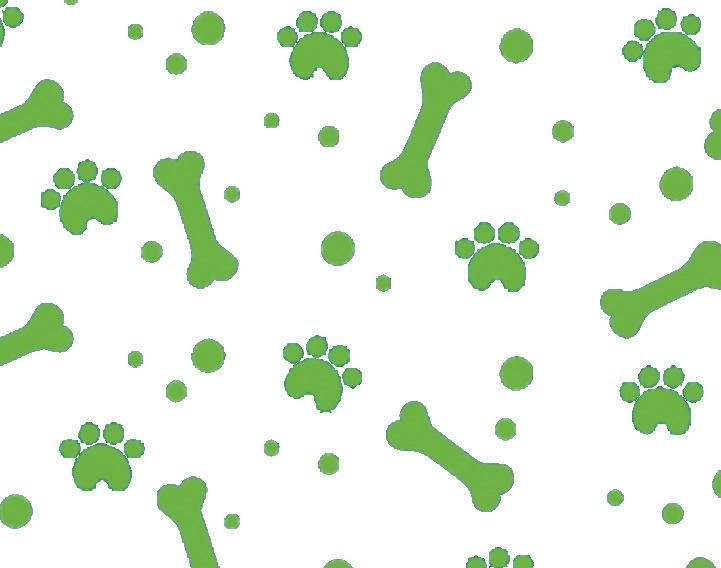
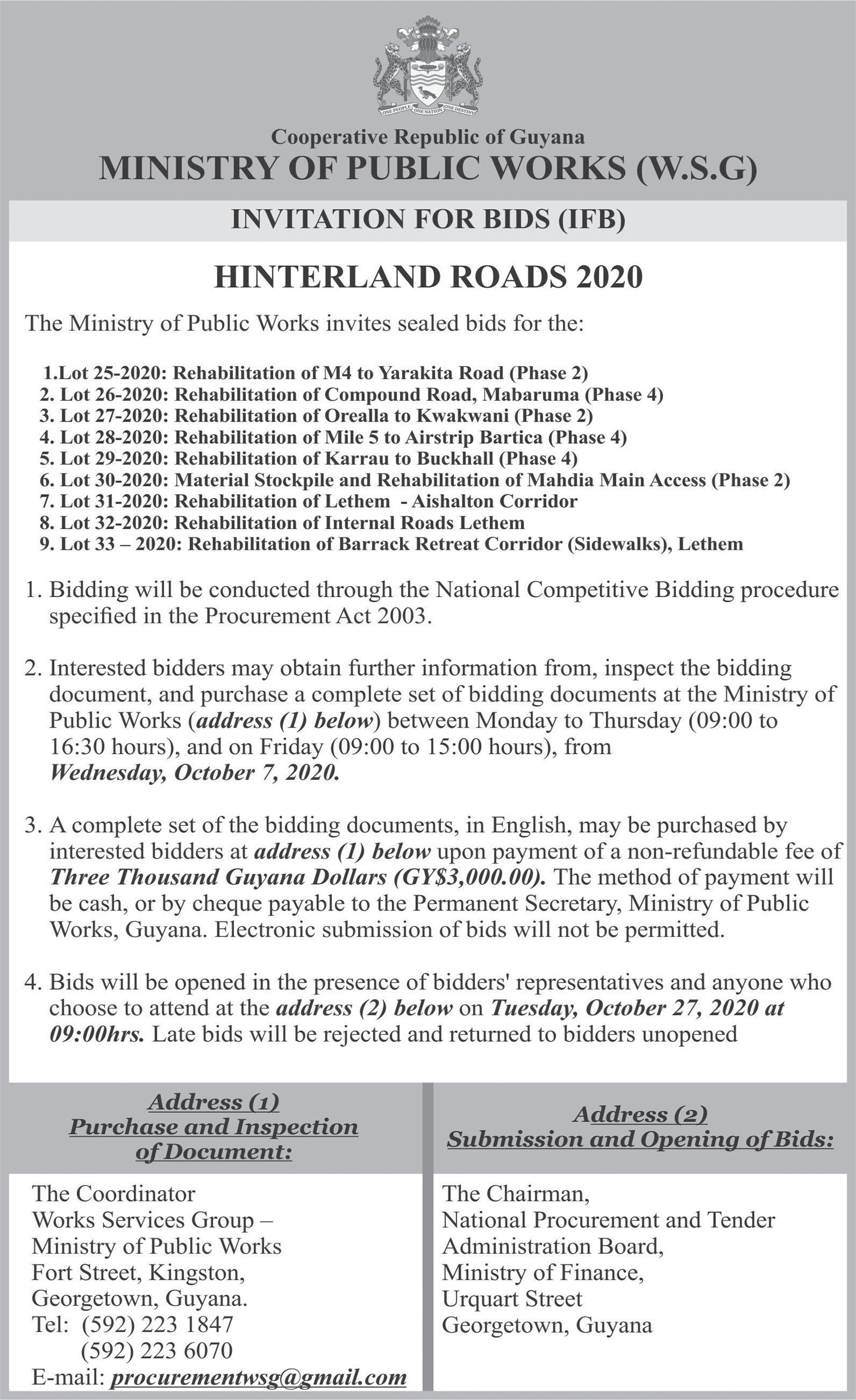
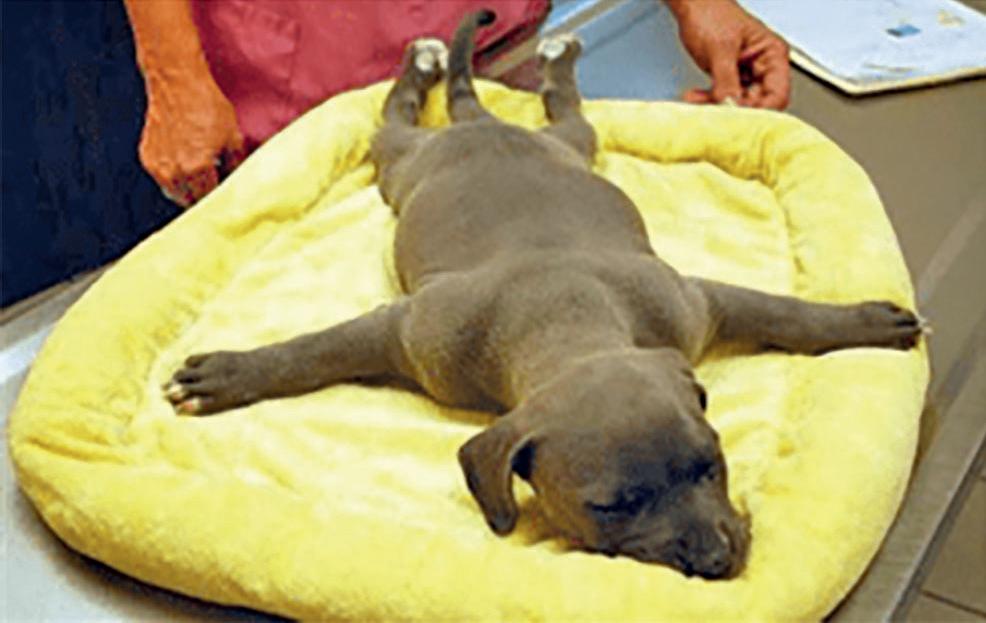

The next part of the question asks whether the condition will improve as the pups get older. Since, I have not often experienced improvement – without veterinary intervention – the answer has to be “NO”.
The real questions now must be: (i) Should we allow the afflicted pups to continue its life? (ii) Can something be done to improve the pup’s continued existence, by getting the sprawled legs to function better?
Let us address the first question. I dare say that the desire, inherent in the question, is not to “put the pup down” (euthanasia). Before we deal with this question, allow ne to return to the statement made earlier, namely that we are often seeing this condition much more than previously. Has this empirically observed increase in SPS have to do with improper breeding techniques? The literature may make varying statements about SPS. Some authors document that small breeds are more likely to exhibit this condition. This may be true. On the other hand, it cannot be dismissed that pups of the larger breeds (not lastly Rottweilers and German Shepherds) are also exhibiting this syndrome with greater frequency. The literature seems to be clearly leaning towards the conviction that this ailment has its origin in hereditary genetic anchorage. In other words, the SPS affected puppies are born with the congenital defects. This latter argument is supported by the fact that not often do dog “breeders” renew their breed’s genetic material by importing new, proven animals. Consequently, what we are confronted with is incest, likely on a large scale. Inbreeding will be dealt with in detail in a later discussion.
If we agree that SPS is a disorder that has its origin in genetic elements, then the caregivers should be advised to spay/neuter SPS pups, around the age of puberty, so that the condition does not perpetuate itself.
Now, we come to question # 2: Is SPS treatable?
Well,theansweris:Yes. Thesituationisnothopeless.
TREATMENT
The main approach used by most veterinarians is to hobble the sprawled legs by using a strong tape or bandage material to place the legs in the correct (normal) position. (See photo # 2) Your vet could show you how this technique can be implemented at home. Subsequently, it may be preferable for the caregiver to bring the SPS pup(s) for a weekly check-up over a 6 –week period, at least.
It would be favourable and supportive to the young SPS pup(s), if the caregiver could implement the following pieces of advice: (i) Build a simple harness/sling (a soft cloth with 4 holes) which can suspend the pup(s) in such a way that its paws are just slightly touching the ground for about 15 minutes. You can place it/them in your home-made device once every 6 hours or so. (ii) The container in which these SPS pups are placedandthesurroundingareamustnothaveasmooth (=slippery) surface. Some traction is needed. (iii) If the pups are kept in a special bed, then the container must be lined with soft, fluffy material. (iv) One Ms. Emma Williams writing in The Dogington Post has shared the suggestion to enclose the pup in a sock with holes for the sprawling legs, thus creating a vest into which one can pack thin strips of cotton wool where the pup’s chest and abdomen are. Ah well, lets use/try anything that can ameliorate the situation. (v) Encourage the pup to nurse and sleep on its side. This,ofcourse,willrequire(muchofthecaregiver’s) time and effort. (vi) Tickle the deformed pup’s paw-pads every 2-3 hours. This stimulation would encourage the pup to instinctively/reflexively use its legs. (vii) The caregiver could also massage the tiny pup’s body a few times daily, using gentle, unscented moistening cream and applying it with the thumb and forefinger. (viii) Lift the pup slightly, with its legs touching the ground, and simulate a walking motion. One can encourage the movements when the pup is suspended in the sling (See # (i) above).
N.B. (i) Do not overfeed the affected pups. In this particular ailment, we clearly do not want the pup to become too heavy, too quickly. (ii) The caregiver has to keep the young pup clean and not contaminated by its own faeces (stool) and urine.
Undoubtedly, the restoration of the function of the legs over a lengthy period (as long as 6-8 weeks, or more) calls for time and patience and dedication. But, in the end, I can guarantee that the joy of achievement will make the whole exercise worthwhile.
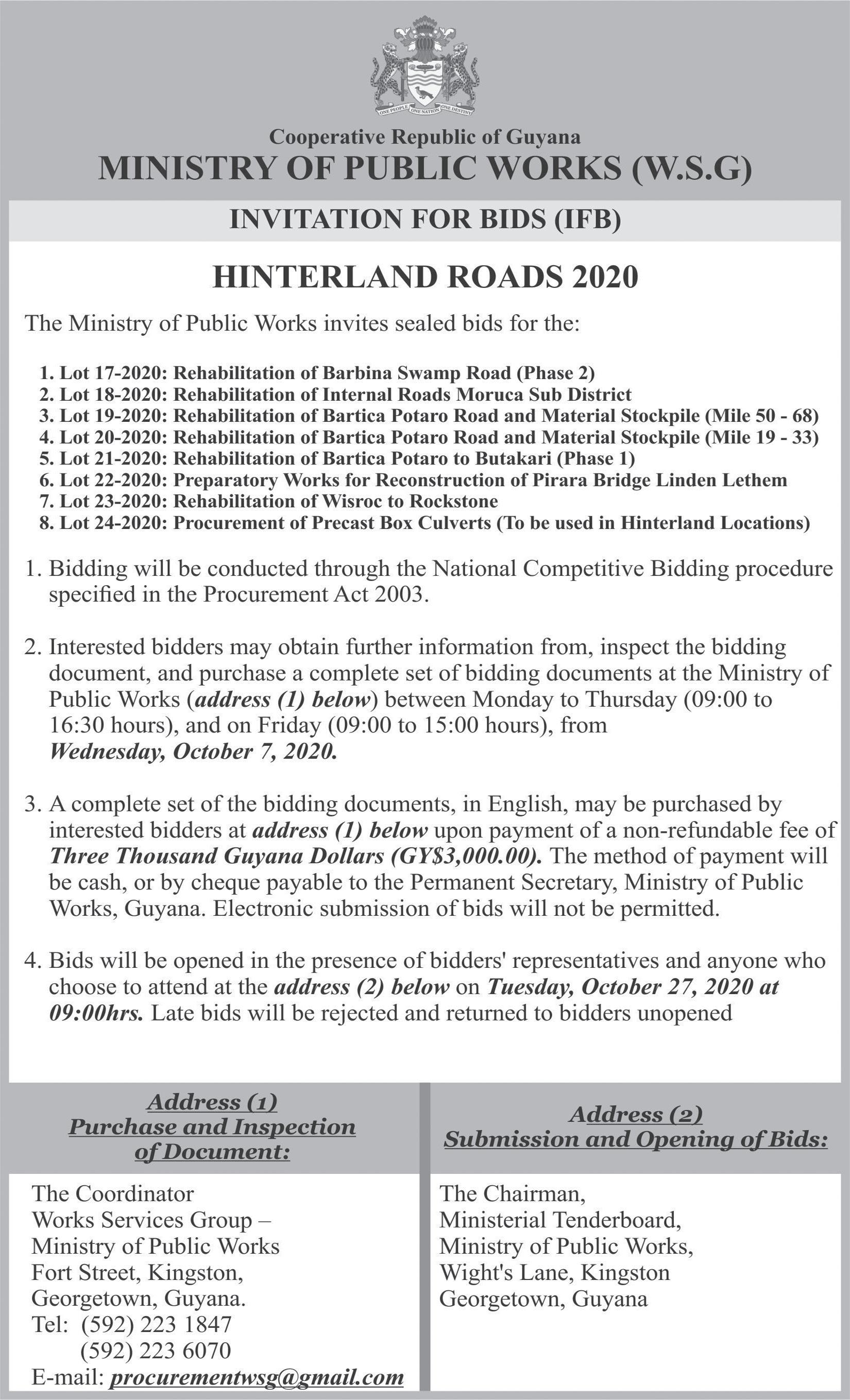
By Rupa SeenaRaine
Anna De Morias has survived the deadly stroke of cancer four times within the course of 12 years. It is a feat that she never thought she could overcome, after being given just a short time to live. Now, she has survived and encourages women to ensure that they get screened as early as possible.
During an interview with Guyana Times, the cancer survivor related that her journey started on an early morning in 2007, during a visit to the gym when she experienced breast pains. However, De Morias she was afraid to get tested, having considered that cancer was dominant in her family’s history. er developed a complication. An oncologist then made the discovery that she had developed lung cancer.
“When I did the surgery, after that I was okay. But in December, water started entering my lungs and when I went to my oncologist and did an X-ray, they saw that the cancer went to the left side lungs.”
This spiralled into an episode of weight loss, and no medications seemed to help. The 56-year-old, who resides in Mahaica, said she was visiting the hospital constantly to remove the water from her lungs and in January 2009, doctors told her family that she had a very short time to live.
De Morias sought assistance from the Cancer Institute, where she would ation.
“By God’s grace, I’m okay right now. I’m cancer-free and a four-time survivor of cancer,” she proudly beamed.
During the time of her treatment and remission, the survivor said she kept herself motivated by joining the Periwinkle Cancer Club, the Giving Hope Foundation, the Beacon Foundation and other organisations to educate women.
At present, she is encouraging women to get screened even if they have a suspicion that they may be carrying a cancerous disease. Others were urged to do routine checks, even though they may seem healthy.
“I joined so that I could tell persons of my experience and give persons hope because cancer is not death. However, De Morias said this is not an indication to stop taking treatment because the disease will eventually have a chance to take over the body.
“The chemotherapy give you pains and it is terrible. That makes some people not wanting to go back. They take it one time and they don’t want to go back. I’ve seen that many times but after some time, the cancer gets aggressive. If you really bother with the feeling, you won’t want to do it but you need it.”
She told this publication that maintaining a healthy diet is essential during treatment, especially one that is free of elements that would hasten the spread of the disease.
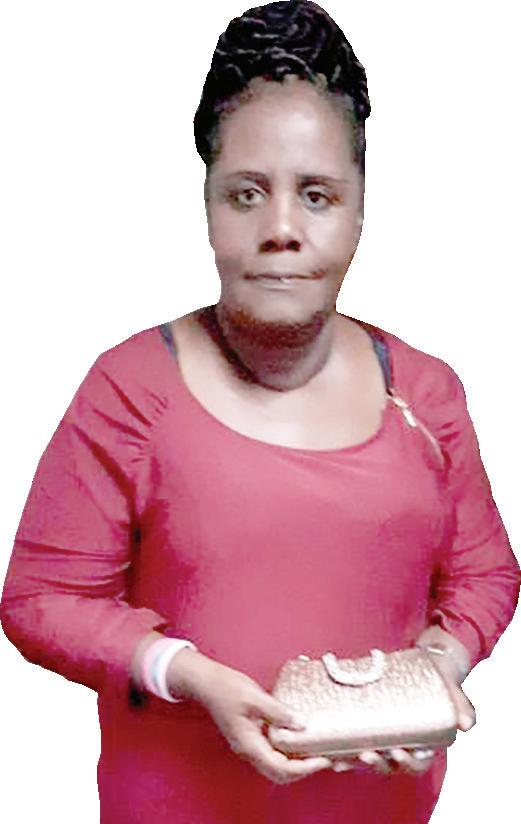
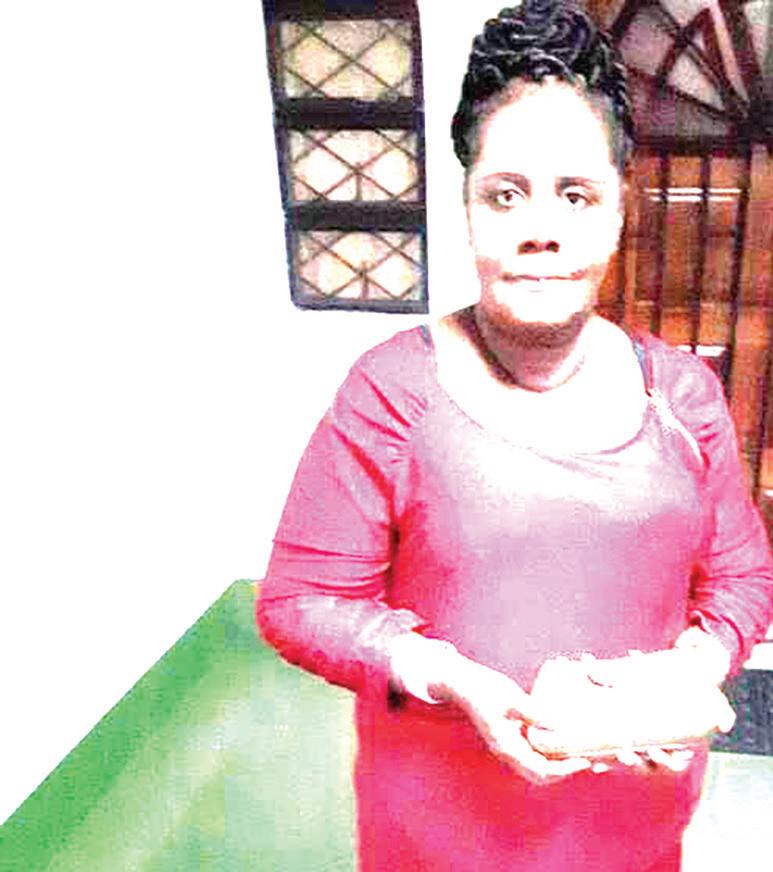
The month of October is dedicated towards Breast Cancer Awareness with persons donning the colour pink, primarily in the form of a ribbon, to show support. During this time, the annual campaign raises awareness and funds to assist patients. Four-time cancer survivor Anna De Morias Statistics from the World Health Organisation (WHO) show that breast cancer is the number one cause of cancer-related deaths in women worldwide. It is estimated that the survival rate for early (stage 1) breast cancer has risen dramatically over the past decades, and is now 80-90 per cent in many high-income countries.
Anna De Morias at a cancer awareness event earlier this year
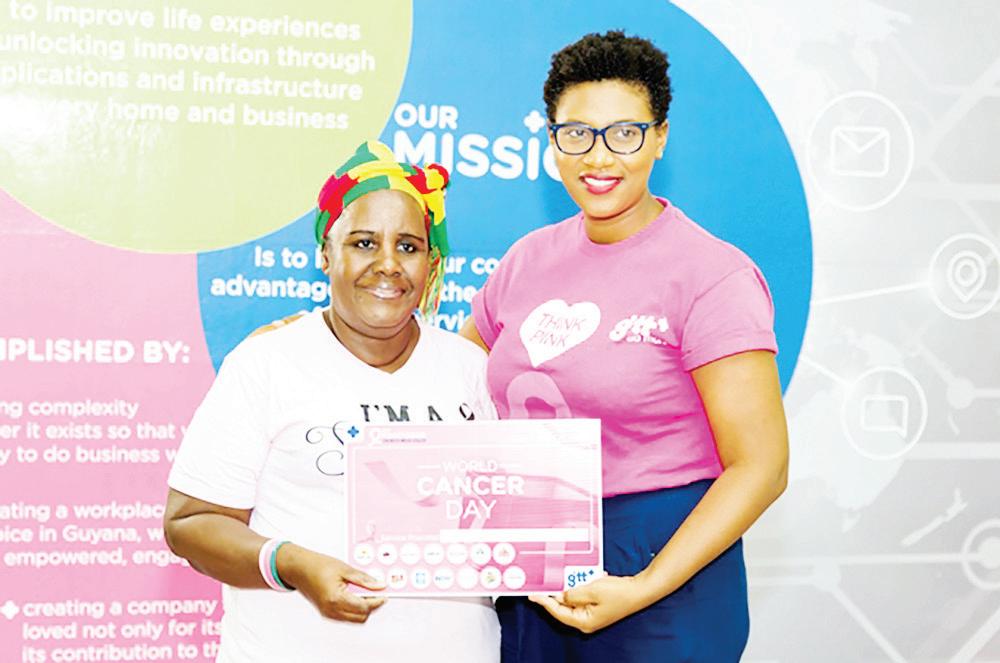
It was not something she was willing to think about until 2008, when those pains continued. As such, she was urged to visit the Guyana Cancer Institute, where a mammogram and biopsy were performed.
“I did not go to the doctor because I was afraid. I knew that cancer was part of my father’s side of the family. I didn’t want to think about it and I was scared to go to the doctor. I told my husband about how I was feeling in 2008 and I went to do the tests,” the woman recalled.
When those results returned, there was no positive detection of cancer. A second biopsy would later indicate that it was breast cancer in the form of carcinoma. Carcinoma is a type of cancer that starts in cells that make up the skin or the tissue lining organs. They are abnormal, dividing without control and can spread to other parts of the body.
Having been diagnosed with the disease, De Morias underwent a mastectomy to remove the right breast in October 2008. She felt well for a few months but lat-

recover enough to undergo chemotherapy. Nine months of treatment followed and she was cleared.
Notwithstanding, this was not the end of the battle for the mother of three. It was years later, in 2015, when she was diagnosed a second time with breast cancer, requiring a double mastectomy and chemotherapy. In 2018, she was diagnosed for the last time with vaginal cancer and subjected to radiI would encourage them people to go get help right away. Right now, I’m telling persons to go and get it checked out. Right now, I am afraid of this time. I’ve seen many people suffer but this is not the end. If I had given up, I wouldn’t have been here,” she relayed.
During chemotherapy and radiation, she recalled that there are instances where the body feels “down”. This is coupled with pains.
